Explore and celebrate the top 50 religious festivals in India, each a unique chapter in the grand narrative of spiritual communion.
India, a nation steeped in ancient traditions and diverse cultures, is a vibrant mosaic of religious celebrations. The rich tapestry of religious festivals in India reflects the country’s deep-rooted spiritual essence and showcases the unity and diversity of its cultural landscape.
In this exploration, we will delve into the top 30 religious festivals that adorn the Indian calendar, each festivity weaving a unique thread into the colourful fabric of the nation’s spiritual tapestry.
India, often referred to as the land of spiritual diversity, is a cultural kaleidoscope that weaves together a myriad of traditions, customs, and rituals. At the heart of this vibrant tapestry lie the pulsating rhythms of religious festivals that echo the spiritual enthusiasm embedded in the nation’s soul.
In this blog, we embark on a captivating journey through the length and breadth of India. From the shining lights of Diwali to the soul-stirring chants of the Rath Yatra, join us in unravelling the magic and meaning behind these sacred celebrations that adorn the Indian calendar.
In the ensuing chapters of our journey, we will unravel the magic and meaning behind more religious festivals in India, each contributing to the diverse and harmonious spiritual landscape that defines this extraordinary nation.
Join us as we delve into the cultural richness and spiritual depth that make India a tapestry of celebration, devotion, and unity.
1. Diwali: Illuminating the Soul
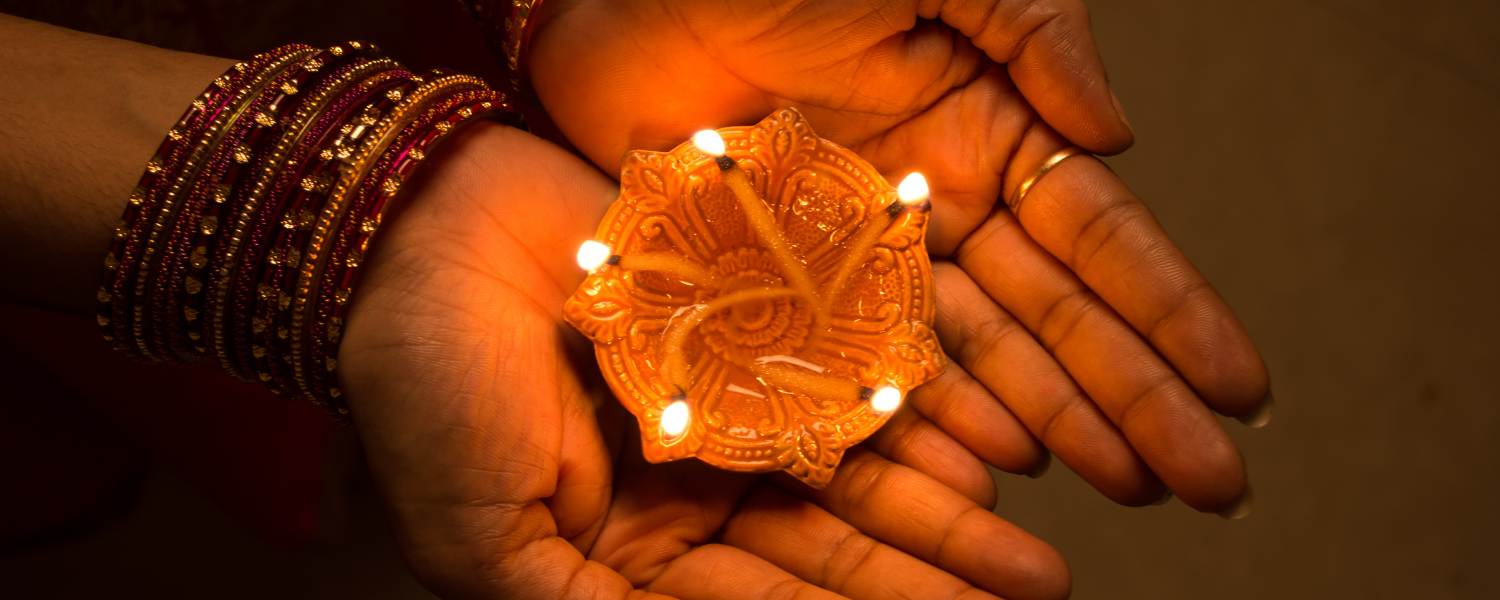
Kicking off our journey through the religious festivals in India is the grandeur of Diwali, also known as the Festival of Lights. Celebrated with immense zeal and enthusiasm, Diwali transcends religious boundaries, bringing people together to celebrate the triumph of light over darkness.
Homes are adorned with oil lamps and candles, and the night sky is illuminated with vibrant fireworks, symbolizing the victory of good over evil and the awakening of inner light. The heart of Diwali lies in the tradition of illuminating homes and public spaces with myriad lamps and candles.
The glow of these lights transforms the physical surroundings and carries a profound symbolic meaning.It represents the inner light that dispels ignorance’s darkness and ushers in knowledge’s brilliance.
Diwali becomes a metaphorical journey toward self-realization, urging individuals to overcome their inner darkness and embrace the light of wisdom. Central to Diwali is worshipping Goddess Lakshmi, the goddess of wealth and prosperity.
Homes are cleaned and decorated, and families come together to offer prayers, seeking the blessings of Goddess Lakshmi for abundance and prosperity. Cleaning is not merely a physical ritual but a symbolic cleansing of the mind and heart, preparing the individual for the influx of positivity and wealth. In this sense, Diwali becomes a holistic celebration encompassing life’s external and internal dimensions.
Diwali: A Celebration of Light, Values, and Community Harmony
Crucial to the spirit of Diwali is the exchange of gifts and sweets. This tradition fosters a sense of generosity and shared joy among friends, family, and neighbours. The act of giving during Diwali is not just a material exchange; it symbolizes the giving of love, kindness, and positive energy.
It reflects the essence of religious festivals in India, where the celebration extends beyond individual boundaries and becomes a collective expression of community and goodwill. The festival also marks the return of Lord Rama to Ayodhya after his victory over the demon king Ravana.
The lighting of lamps during Diwali is a way of commemorating the joyous homecoming of Lord Rama and signifies the victory of righteousness. This narrative imparts Diwali a moral and ethical dimension, reinforcing the festival’s core message of upholding truth, justice, and virtuous living.
The bursting of fireworks during Diwali, while a source of visual splendour and excitement, has recently been a subject of environmental concerns. It is essential to balance the vitality of celebrations with environmental consciousness.
Communities are increasingly adopting eco-friendly practices, promoting the idea that the festival’s essence lies not in extravagant displays but in the mindful observance of rituals and the fostering of positive values.
2. Holi: A Kaleidoscope of Colors

Moving on to the riotous celebration of Holi, also known as the Festival of Colors, we witness the joyous chaos that marks this vibrant occasion. Holi signifies the victory of good over evil and the arrival of spring.
People from all walks of life come together to play with colourful powders and waters, breaking down social barriers and fostering a sense of equality. Holi is a kaleidoscopic expression of joy and unity, painting the streets with the hues of shared celebration.
Holi originates in ancient Hindu mythology, specifically the tale of Holika and Prahlada. Holika, the sister of Hiranyakashipu, possessed a boon that made her immune to fire. In a twisted plan, she sat on a pyre with Prahlada, intending to burn him.
However, divine intervention turned the tables, and Prahlada emerged unscathed while Holika perished. Holi, thus, symbolizes the victory of devotion over tyranny, and the burning of Holika is reenacted during the festival through the ritual of Holika Dahan.
Holi typically falls in March, marking the end of winter and the arrival of spring. The festival begins with Holika Dahan, where bonfires are lit to symbolize the victory of good over evil. The next day, known as Dhulandi or Rangwali Holi, is when the true spectacle unfolds.
Colors of Unity: Celebrating Holi’s Diversity and Shared Joy
People of all ages take to the streets, parks, and open spaces armed with vibrant coloured powders and water balloons. The air is filled with laughter and joyous shouts as friends and strangers join in the revelry.
It is a day when societal norms are temporarily suspended and people are united in the common pursuit of shared celebration. While Holi has evolved into a secular celebration, its religious significance remains deeply ingrained.
The festival reflects the Hindu philosophy of the eternal battle between righteousness and malice. The legend of Prahlada and Holika serves as a metaphor for the victory of devotion, truth, and virtue over oppression and deceit.
Holi, therefore, becomes a time for spiritual reflection and places to celebrate Holi, reminding us that goodness prevails even in the face of adversity. What sets Holi apart is its ability to transcend religious and cultural boundaries.
While rooted in Hindu traditions, Holi has become a celebration embraced by people of various faiths and backgrounds. In the true spirit of religious festivals in India, Holi fosters unity in diversity.
During this festival, the colour-stained faces of revellers showcase a beautiful mosaic of diversity, breaking down barriers and promoting a sense of oneness among communities.
3. Navratri: Nurturing Devotion Over Nine Nights

Navratri, a nine-night festival dedicated to the divine feminine, exemplifies the diversity of religious festivals in India. During this auspicious period, devotees fast, pray, and engage in traditional dances like Garba and Dandiya.
The festival celebrates the triumph of good over evil and emphasizes the importance of inner strength and devotion. Navratri showcases the spiritual diversity that flourishes across the country. The festival unfolds in three sets of three nights, each dedicated to a different form of Goddess Durga.
Shailaputri, Brahmacharini, and Chandraghanta during the first three nights, followed by Kushmanda, Skandamata, and Katyayani in the next three, and concluding with Kalaratri, Mahagauri, and Siddhidatri in the final phase.
Each night is marked by energetic Garba and Dandiya Raas dances, where men and women come together in colourful traditional attire, creating a lively and joyous atmosphere.
Navratri is a religious observance and a cultural extravaganza that fosters a sense of unity and community spirit. The infectious energy of the dance forms and the rhythmic beats of the music create an ambiance that transcends age and social barriers.
Amid the swirling skirts and twirling sticks, people forge connections, making Navratri a celebration of religious devotion and shared joy and togetherness.
4. Ganesh Chaturthi: Welcoming the Elephant God with Devotion
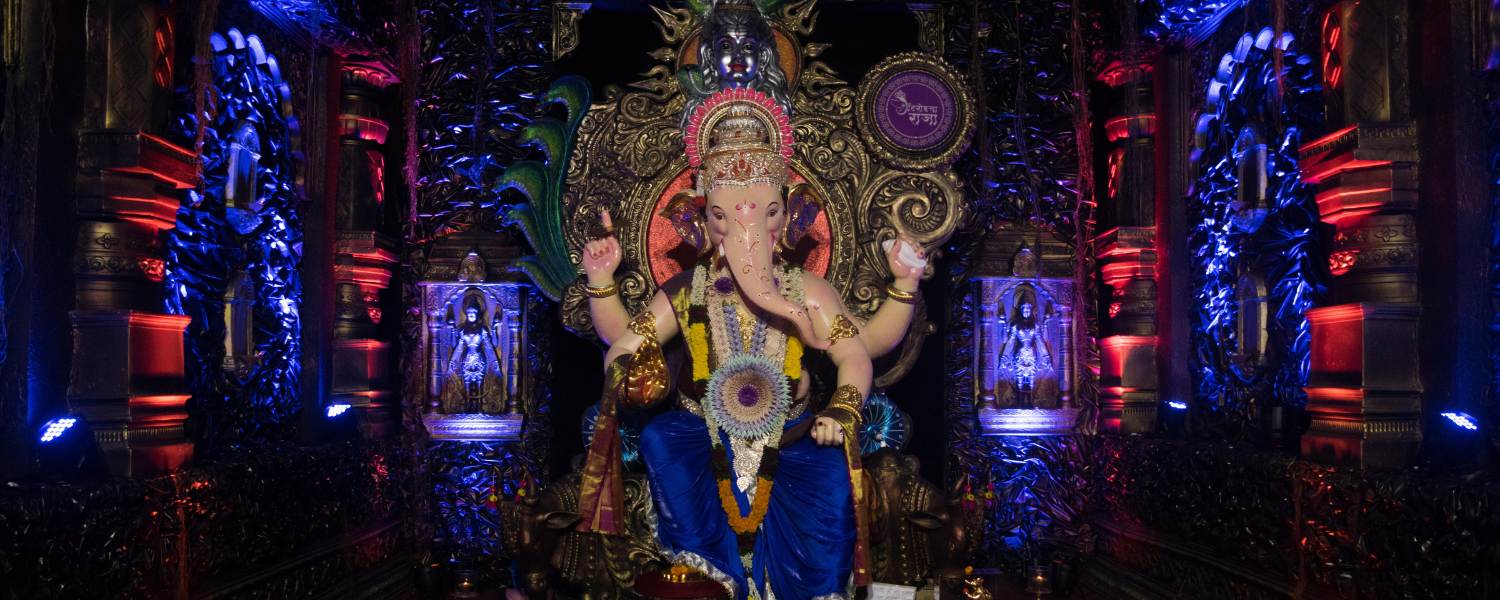
Ganesh Chaturthi, a festival dedicated to Lord Ganesha, is a testament to the religious harmony prevalent in India. The streets come alive with processions, elaborate decorations, and the chanting of devotional hymns. The festival culminates in the immersion of intricately crafted idols of Lord Ganesha, symbolizing the cyclical nature of creation and destruction.
Ganesh Chaturthi is a celebration that unites people across faiths in reverence for the beloved elephant god. Devotees, with hearts brimming with devotion, welcome Lord Ganesha into their homes. The festival typically spans ten days, during which devotees engage in daily prayers, devotional songs, and cultural performances.
The crescendo of the celebration is reached on the tenth day, known as Anant Chaturdashi, when the idols are immersed in water bodies, symbolizing the departure of Lord Ganesha back to his celestial abode. The processions during the immersion, known as Ganpati Visarjan, are marked by vibrant colours, traditional music, and emotional chants of “Ganpati Bappa Morya!” (O Lord Ganesha, come again soon!).
The festival promotes a sense of community bonding as neighbours and friends come together to celebrate the presence of the beloved Elephant God. Ganesh Chaturthi is not merely a religious festival but a cultural phenomenon transcending religious boundaries.
The elaborate decorations, artistic expressions, and community involvement showcase the creativity and unity inherent in Indian culture. The festival serves as a reminder of the importance of wisdom, prosperity, and the removal of obstacles on life’s journey, making Ganesh Chaturthi a beloved and widely celebrated religious festival in India.
5. Eid-ul-Fitr: Breaking the Fast with Community Joy

Our exploration extends to Islamic traditions with Eid-ul-Fitr, a significant celebration marking the fasting month’s end of Ramadan. The festival begins with prayers, followed by feasts and the exchange of gifts. Eid-ul-Fitr exemplifies the spirit of unity and brotherhood as people come together to break their fasts and share the joy of the occasion.
The celebration resonates with the core principles of compassion and generosity.The day begins with a special prayer, known as Salat al-Eid, conducted in open fields or mosques, where the community comes together to offer thanks for the strength and discipline shown during the fasting month.
The central theme of the festival is the act of giving, especially to those less fortunate. Muslims engage in acts of charity known as Zakat al-Fitr, ensuring that everyone can partake in the celebrations by providing for their basic needs.
The culinary delights of Eid-ul-Fitr are a feast for the senses, with special dishes prepared to mark the end of the fasting period. Families and friends come together to share festive meals, and it is customary to exchange gifts and greetings.
The joyous atmosphere extends beyond individual households to encompass entire neighbourhoods, creating a sense of communal celebration. Eid-ul-Fitr exemplifies the principles of compassion, generosity, and unity inherent in Islam.
Breaking the fast is both a physical indulgence and a spiritual affirmation of the values cultivated during Ramadan. Families and communities bond over shared prayers and festive meals and exchange good wishes, creating an atmosphere of warmth and camaraderie.
6. Christmas: A Universal Celebration of Joy
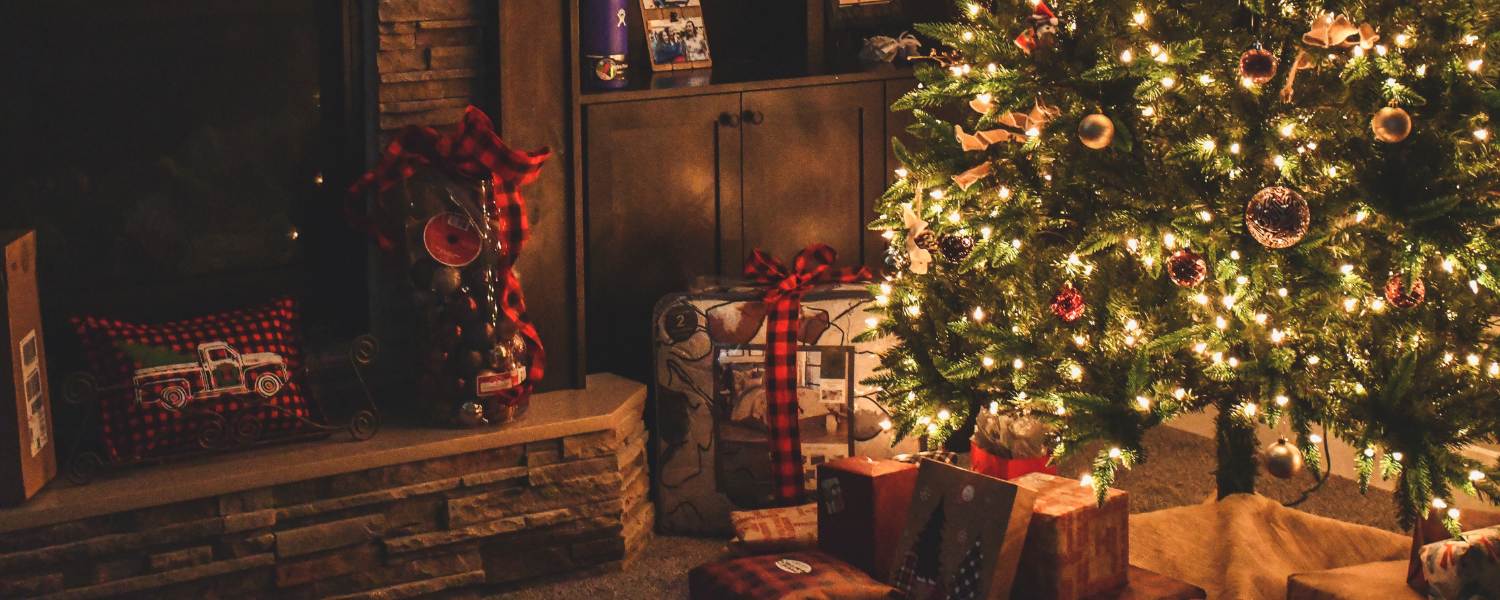
As we delve into the Christian traditions in India, Christmas emerges as a celebration that transcends religious boundaries. Commemorating the birth of Jesus Christ, Christmas is marked by festive decorations, midnight masses, and the exchange of gifts.
The spirit of joy and goodwill permeates the air, making Christmas a universal celebration that unites people from various religious backgrounds. The heart of Christmas celebrations lies in the story of the birth of Jesus Christ. Adorned with festive decorations, churches resonate with hymns and prayers recounting the divine narrative.
Midnight Mass, a central element of Christmas Eve, draws people from different religious backgrounds to partake in the serene beauty of the occasion. The message of peace, love, and compassion that Christmas embodies resonates with people of all faiths, underscoring the universal appeal of religious festivals in India.
Beyond the religious ceremonies, Christmas in India takes on a uniquely cultural flavour. Markets adorned with twinkling lights and festive decorations offer an array of goodies, from traditional plum cakes to intricately crafted decorations.
The joyous spirit extends to schools and workplaces, where Christmas celebrations foster a sense of unity and diversity. In this way, Christmas becomes a universal celebration that seamlessly integrates into India’s rich mosaic of religious festivals.
7. Pongal: Harvesting Happiness in the South
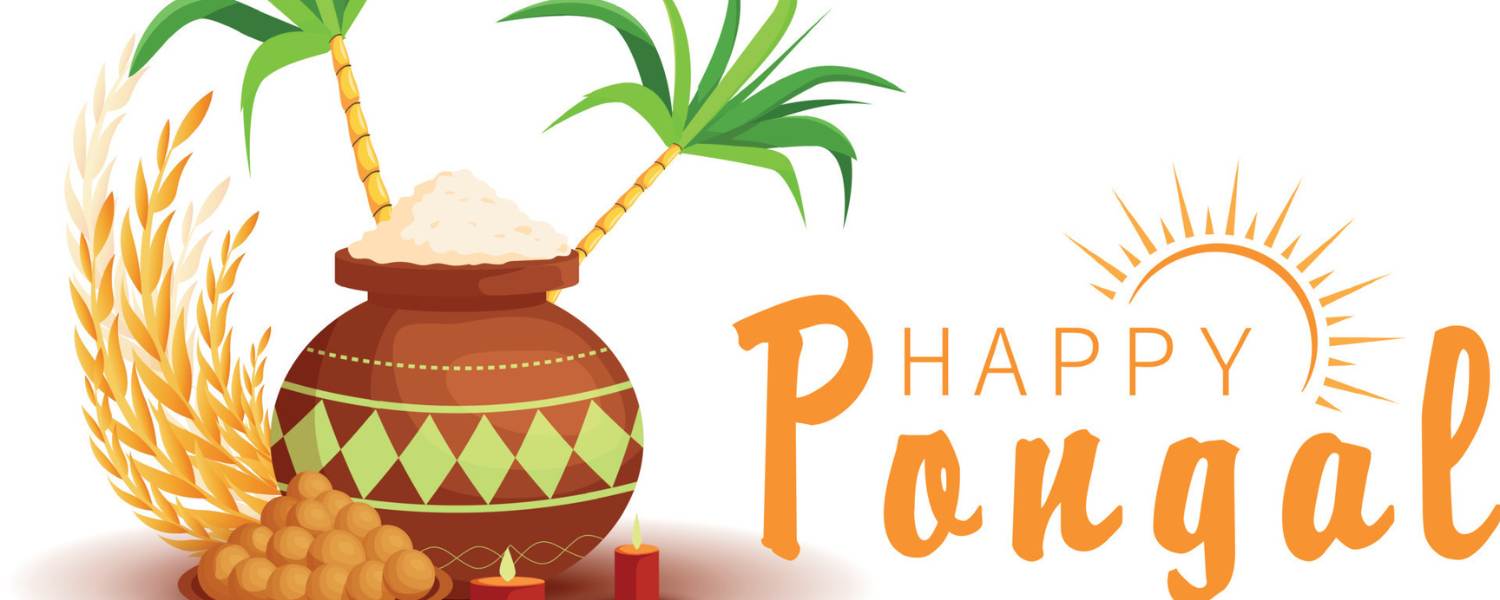
Pongal, a festival celebrated predominantly in South India, is a harvest festival that emphasizes gratitude for nature’s bounties. The festival spans four days and involves traditional rituals like preparing a special dish called ‘Pongal.’
Families come together to thank the Sun God and rejoice in the abundance of the harvest, creating a sense of unity and prosperity. The festivities of Pongal span four days, each marked by unique rituals and customs.
The first day, Bhogi Pongal, involves burning old possessions, symbolizing the shedding of the past to embrace the new. The second day, Thai Pongal, is the main day of celebration, where families gather to cook the Pongal dish—a special preparation of freshly harvested rice and lentils.
The act of boiling the Pongal dish until it overflows represents abundance and prosperity, reinforcing the agricultural and religious roots of the festival. Mattu Pongal, the third day, is dedicated to honouring cattle, essential partners in rural life. Cattle are adorned with garlands, and their contribution to the harvest is acknowledged.
The fourth day, Kaanum Pongal, is a day for family outings and picnics, further emphasizing the communal and familial aspects of the festival. Pongal reflects the cultural ethos of the South, where reverence for nature and rural practices is deeply ingrained.
The festival becomes a joyous reunion for families, a moment to express gratitude for the abundance provided by the land, and a religious affirmation of the interconnectedness of humanity and the environment.
8. Baisakhi: Harvesting Joy in the Fields of Punjab

Heading to the vibrant state of Punjab, we encounter the lively celebration of Baisakhi. This festival marks the Sikh New Year and the harvest season. The day begins with prayers at the Gurudwara, followed by traditional dance, music, and feasting.
Baisakhi reflects the spirit of community and shared joy, embodying the essence of religious festivals in India. The festival commences with religious processions, known as Nagar Kirtan, where devotees gather to recite hymns and share the joyous spirit of Baisakhi.
Gurudwaras, especially the iconic Golden Temple in Amritsar, are adorned with lights and decorations, creating a serene yet festive ambience. The langars (community kitchens) serve free meals to all, irrespective of caste, creed, or religion, exemplifying inclusivity in religious festivals in India.
Agricultural rituals play a significant role in Baisakhi celebrations. Farmers express gratitude for the bountiful harvest by performing the traditional Bhangra and Gidda dances in the fields. The vibrant dance forms, accompanied by lively music, not only reflect the vitality of the harvest but also showcase the cultural richness of Punjab.
Baisakhi is a time for joyous community gatherings where people unite to share the fruits of their labour, figuratively and literally. The festival becomes a tapestry of colours as people dress in traditional attire, participate in cultural events, and indulge in festive delicacies.
Baisakhi, therefore, embodies the joyful fusion of religious, cultural, and agricultural elements, harmonizing the diverse facets of life in Punjab.
9. Raksha Bandhan: A Bond of Protection and Love
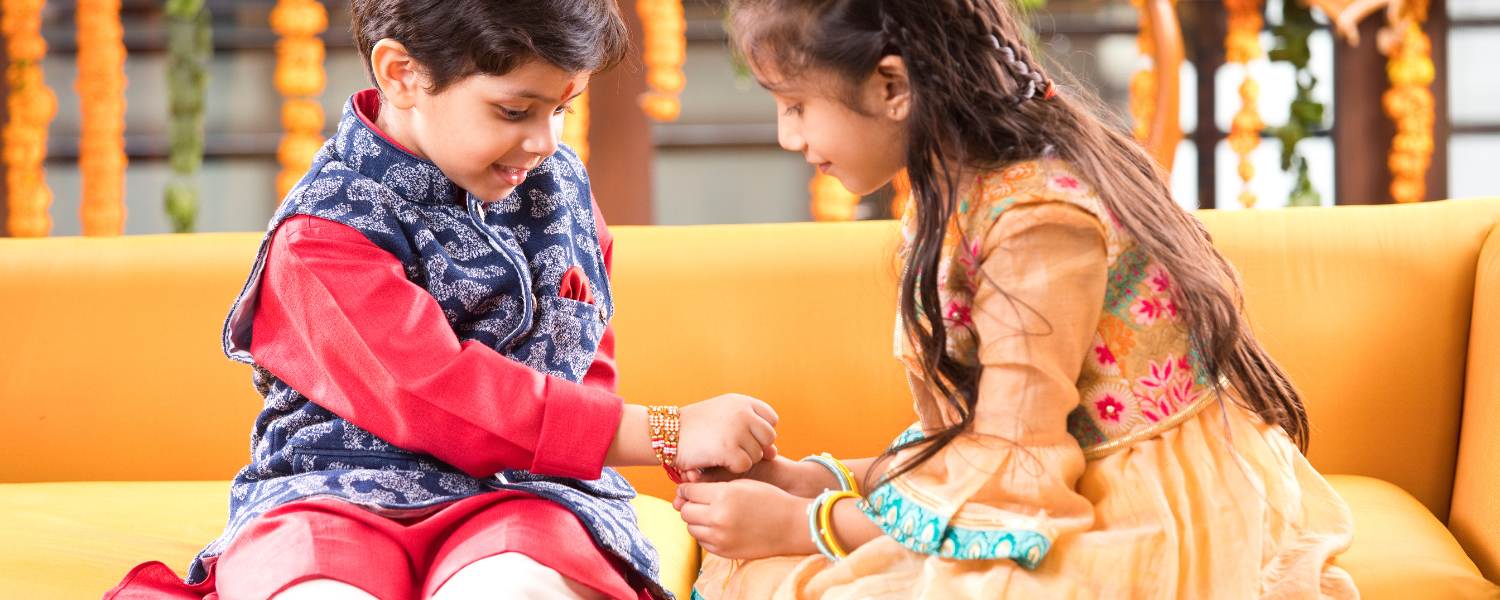
Raksha Bandhan, a festival celebrating the bond between brothers and sisters, is a unique addition to the religious festivals in India. Sisters tie a sacred thread, a ‘rakhi,’ on their brothers’ wrists, symbolizing love and protection. In return, brothers pledge to safeguard their sisters.
The festival transcends biological relationships, extending to friends and neighbours and fostering a sense of communal harmony. This festival celebrates the unique relationship between siblings, emphasizing the virtues of trust, support, and the unwavering bond that transcends time and distance.
Sisters perform aarti (a ceremonial prayer) for their brothers, symbolizing the wish for their well-being and prosperity. In return, brothers offer gifts and a promise to stand by their sisters in need.
The rituals of Raksha Bandhan are steeped in tradition, carrying forward the cultural and emotional significance that has been cherished for centuries. Families come together as part of the festivities, strengthening familial unity.
The exchange of rakhis and gifts extends beyond blood relations, with friends and neighbours also participating in this joyous celebration. Raksha Bandhan reflects the larger Indian ethos, where relationships are revered and the spirit of protection and love extends to the broader community.
10. Onam, Kerala’s Grand Harvest Festival
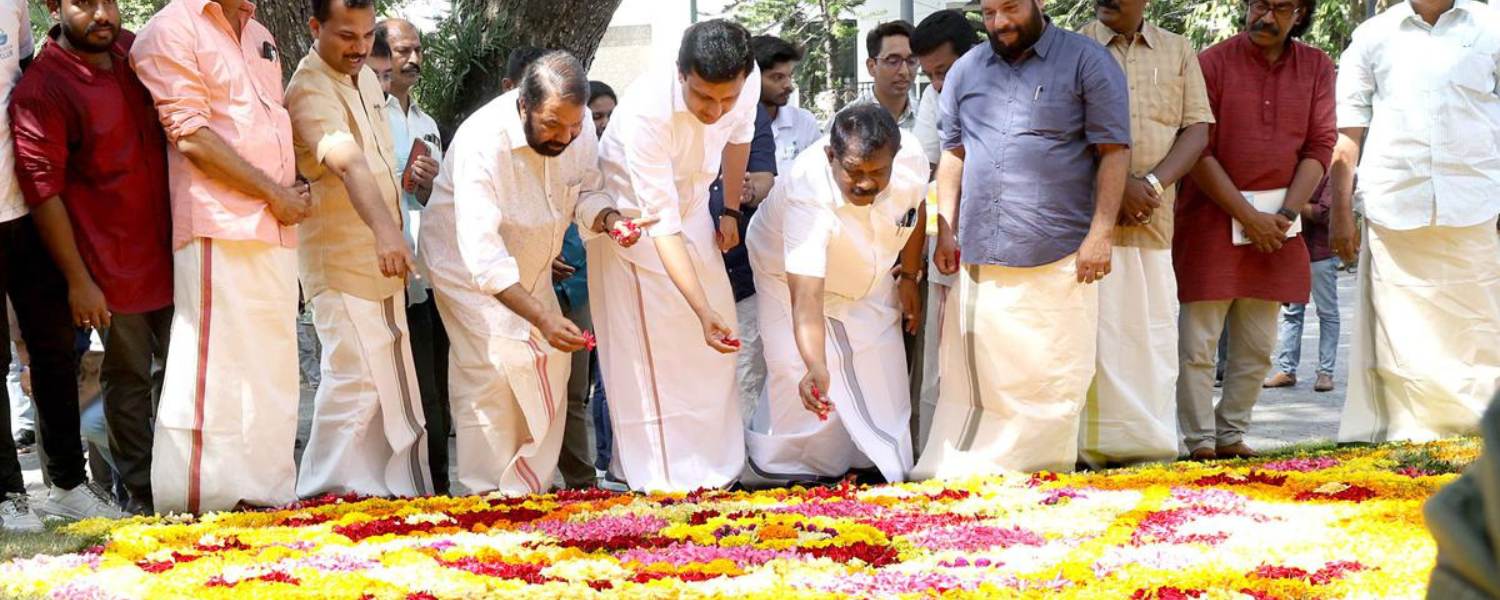
In the southern state of Kerala, Onam takes centre stage as a grand harvest festival. The festival spans ten days and involves vibrant decorations, traditional dance forms, and a grand feast called ‘Onasadya.’The celebration of Onam transcends religious boundaries, uniting people in the spirit of festivity and cultural richness.
Onam, the grand harvest festival of Kerala, stands out as a vibrant and culturally rich celebration that transcends religious affiliations. With its roots in Hindu mythology, Onam commemorates the mythical return of King Mahabali, a benevolent ruler whose reign was marked by prosperity and equality.
The festival spans ten days, showcasing a spectacular display of traditional rituals, cultural performances, and the sumptuous Onasadya, a grand feast featuring a variety of vegetarian dishes. Onam is not merely a celebration of abundance and harvest; it reflects Kerala’s spirit of inclusivity and communal harmony.
The grand procession, known as Onam Athappookalam, features participants from various religious backgrounds marching together in unity. This cultural amalgamation makes Onam a celebration that goes beyond religious boundaries, embracing the diversity that defines India’s religious landscape.
11. Durga Puja, Bengal’s Grand Celebration

Durga Puja, celebrated with immense zeal in West Bengal, is a grand celebration of the goddess Durga’s victory over the demon Mahishasura. Elaborate pandals, artistic idols, and cultural performances characterize this festival. Durga Puja is a religious event and a cultural extravaganza that brings people together in joyous revelry.
The legend behind Durga Puja centres around the victory of Goddess Durga over the demon Mahishasura. According to Hindu mythology, Mahishasura, a powerful demon, terrorized both the heavens and the earth. Unable to tolerate his tyranny, the gods created Goddess Durga, bestowing her various weapons and powers.
She waged a fierce battle against Mahishasura for nine days and nights, ultimately defeating him on the tenth day, known as Vijaya Dashami. The preparation and celebration of Durga Puja begin months in advance, with communities and local clubs, known as “pandals,” competing to create Goddess Durga’s most magnificent and artistic idols.
These idols, often reaching towering heights, are elaborately decorated with intricate designs and vibrant colours. The idols are brought to the pandals amidst grand processions, accompanied by traditional music and dance. The main celebration spans ten days, with elaborate rituals and prayers conducted daily.
Devotees visit the pandals to offer their reverence and seek the blessings of Goddess Durga. The tenth day, Vijaya Dashami, is marked by the immersion of the idols in rivers or water bodies, symbolizing the departure of the goddess back to her celestial abode.
This ritual accompanies immense fanfare, music, and dancing as the community bids farewell to Goddess Durga with tears of joy and sorrow.
12. Janmashtami: Krishna’s Birthday Bash

Janmashtami, the celebration of Lord Krishna’s birth, is marked by devotional songs, dance, and dramatic enactments of episodes from Krishna’s life. The festival unites people in their love for Lord Krishna, fostering a sense of spiritual camaraderie. Temples and homes are adorned with decorations, and holy fervour fills the air during this joyous occasion.
Janmashtami, one of the prominent religious festivals in India, falls on the eighth day (Ashtami) of the Krishna Paksha (dark fortnight) in the month of Bhadrapada. Devotees across the nation come together to honour Lord Krishna, who is regarded as the eighth incarnation of Lord Vishnu.
The day is marked by elaborate rituals, with devotees observing fasts, singing devotional songs, and engaging in prayers at temples. The most iconic aspect of Janmashtami is “Dahi Handi,” where teams form human pyramids to break pots filled with butter, a favourite of Lord Krishna.
As night falls, temples and homes are adorned with colourful decorations and illuminated with countless lamps and candles. Devotees enact scenes from Krishna’s life; processions are taken out with beautifully adorned deity idols in some regions.
Janmashtami is not just a religious festival in India; it’s a time for communities to unite, share joy, and strengthen their bonds.
13. Ram Navami: Celebrating the Birth of Lord Rama

Ram Navami, commemorating the birth of Lord Rama, is celebrated with devotion and grandeur across the country. Devotees participate in prayers, recitations of the Ramayana, and processions to honour the revered deity. The festival emphasizes the virtues of righteousness and the triumph of good over evil, contributing to the spiritual mosaic of religious festivals in India.
Lord Rama, the seventh incarnation of Lord Vishnu, is revered for his exemplary qualities of righteousness, honour, and integrity. Ram Navami is when devotees gather at temples and homes, reciting verses from the Ramayana (the epic that narrates Rama’s life) and offering prayers.
Many undertake fasts and visit significant pilgrimage sites associated with Rama, such as Ayodhya, where he is believed to have been born. One of the highlights of Ram Navami is the “Rama Katha,” a storytelling session that narrates the epic tale of Lord Rama’s life, reinforcing the values and morals he represents.
The festival also witnessed processions and musical performances that brought the streets alive with devotion. Ram Navami is not just a religious festival in India; it’s a celebration of the timeless virtues and ideals upheld by Lord Rama.
14. Guru Purnima: Honoring Spiritual Guides
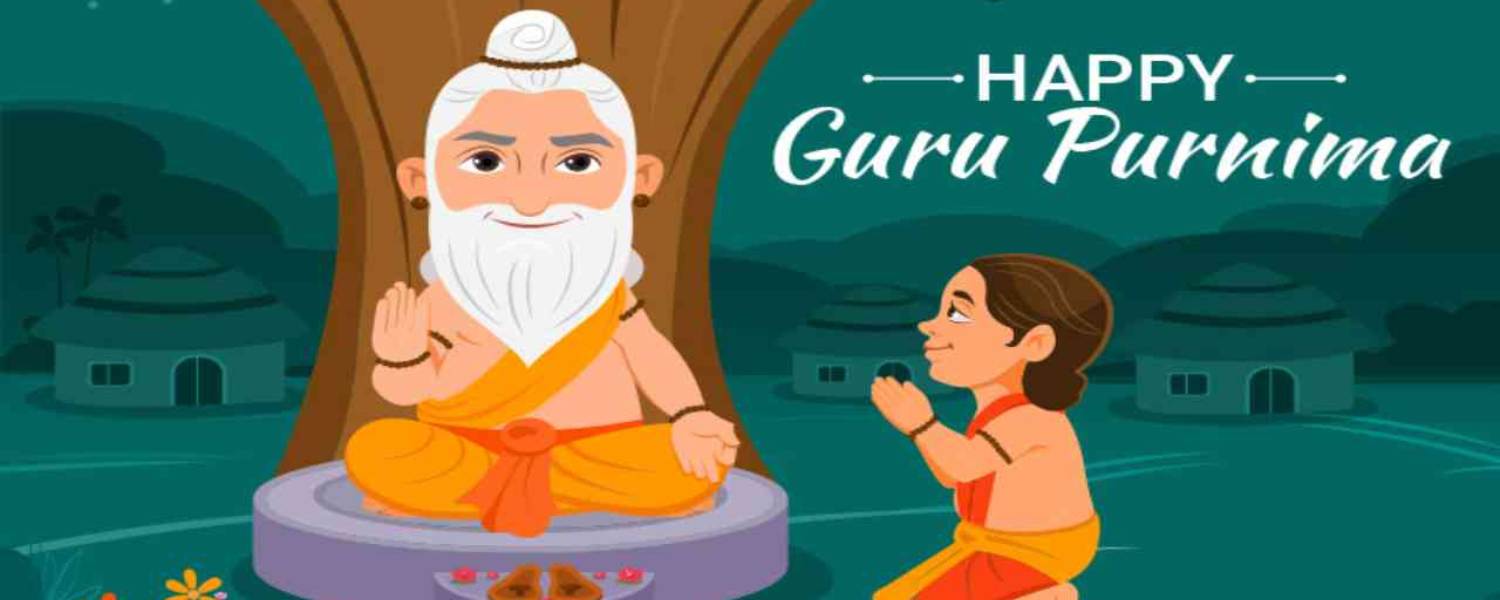
Guru Purnima, a day dedicated to expressing gratitude to spiritual teachers, holds a special place in the hearts of the devout. Devotees participate in rituals, express their reverence for their gurus, and seek blessings for spiritual growth.
The festival underscores the importance of spiritual guidance and the role of mentors in one’s journey towards enlightenment.“Guru Purnima” signifies the guru’s (teacher’s) importance. On this day, devotees express gratitude and reverence towards their gurus by offering prayers, performing rituals, and seeking blessings.
It is a day of reflection, where disciples acknowledge the immense impact their spiritual guides have had on their lives. Guru Purnima transcends religious boundaries and is celebrated by Hindus, Buddhists, and Jains.
People from all walks of life come together to honour their mentors, who have imparted knowledge and shaped their character and outlook on life. It is a day of deep spiritual introspection, where disciples renew their commitment to their spiritual journey and resolve to follow the teachings of their gurus.
15. Karva Chauth: Fasting for Marital Bliss

Karva Chauth, a unique festival observed by married Hindu women, involves a day-long fast for the well-being and longevity of their husbands. The fast is broken after sighting the moon, and husbands express their appreciation by showering their wives with love and gifts.
This festival showcases the strength of marital bonds and the importance of selfless devotion.On this day, women come together for group prayers and adorn themselves in beautiful traditional attire. They observe a strict fast without food or water, culminating in a special moonrise prayer.
After seeing the moon, they break their fast with the first sip of water and a meal prepared by their husbands.This ritual symbolizes their love, devotion, and desire for marital bliss. Karva Chauth beautifully exemplifies the unbreakable bond between couples and the significance of religious festivals in India for strengthening family ties.
16. Maha Shivaratri: Night of Shiva’s Reverence

Maha Shivaratri, dedicated to Lord Shiva, is observed with night-long vigils, prayers, and rituals. Devotees fast and participate in ceremonies to seek Lord Shiva’s blessings for spiritual growth and well-being. The festival exemplifies the deep-rooted reverence for the divine and the pursuit of inner awakening among the followers of Hinduism.
Devotees fast and stay awake all night, engaging in meditation, prayers, and hymns in honour of Lord Shiva. Temples are beautifully adorned with flowers and illuminated with lamps. The Lingam, representing Lord Shiva, is bathed with offerings of milk, honey, and other sacred substances.
Maha Shivaratri showcases the unwavering faith of devotees and the profound reverence they hold for their gods, demonstrating the spiritual essence of religious festivals in India.
17. Eid-ul-Adha: Sacrifice and Sharing
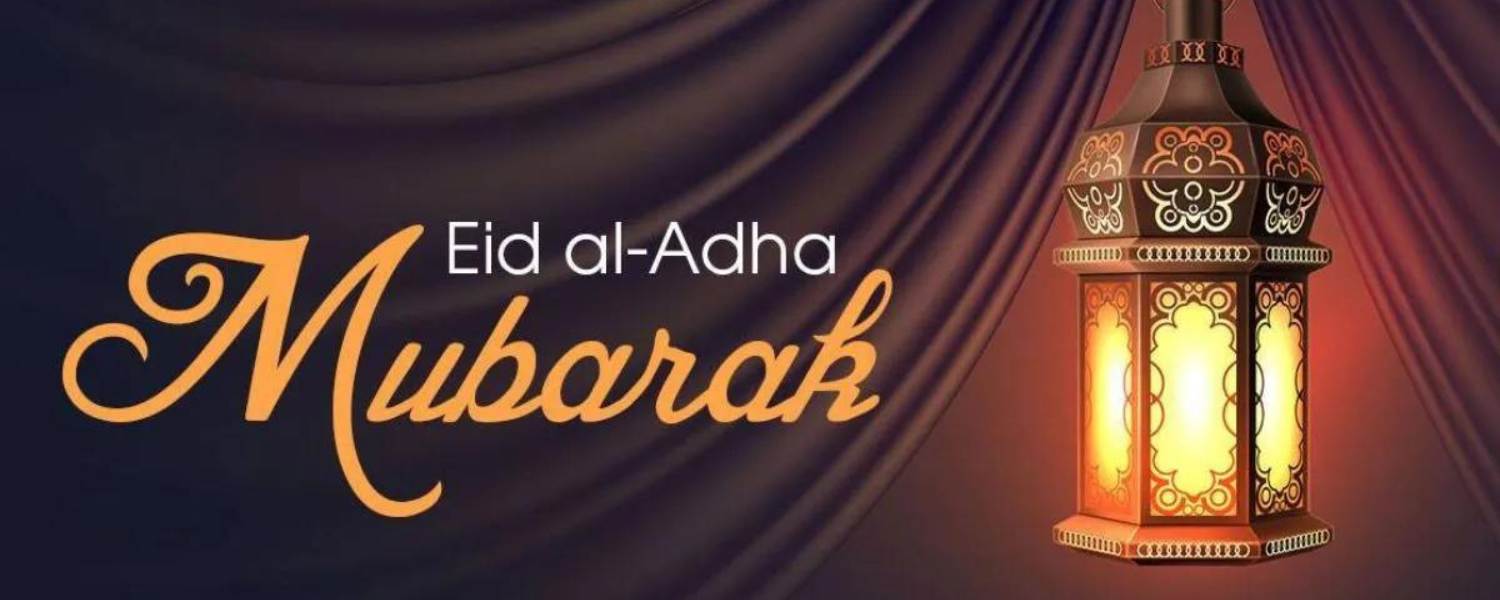
Eid-ul-Adha, also known as Bakrid, is a significant Islamic festival that commemorates the willingness of Prophet Ibrahim to sacrifice his son as an act of obedience to God. The festival involves the ritual sacrifice of animals, and the meat is distributed among family, friends, and the less fortunate.
Eid-ul-Adha embodies the principles of sacrifice, generosity, and compassion. Muslims begin the day with prayers at mosques, and then families gather to perform the sacrifice. A portion of the meat is distributed among needy people, highlighting the importance of sharing and caring for the less fortunate.
Eid-ul-Adha signifies the spirit of sacrifice, generosity, and unity within the Muslim community, underscoring India’s diverse tapestry of religious festivals.
18. Lohri: Punjab’s Winter Harvest Festival
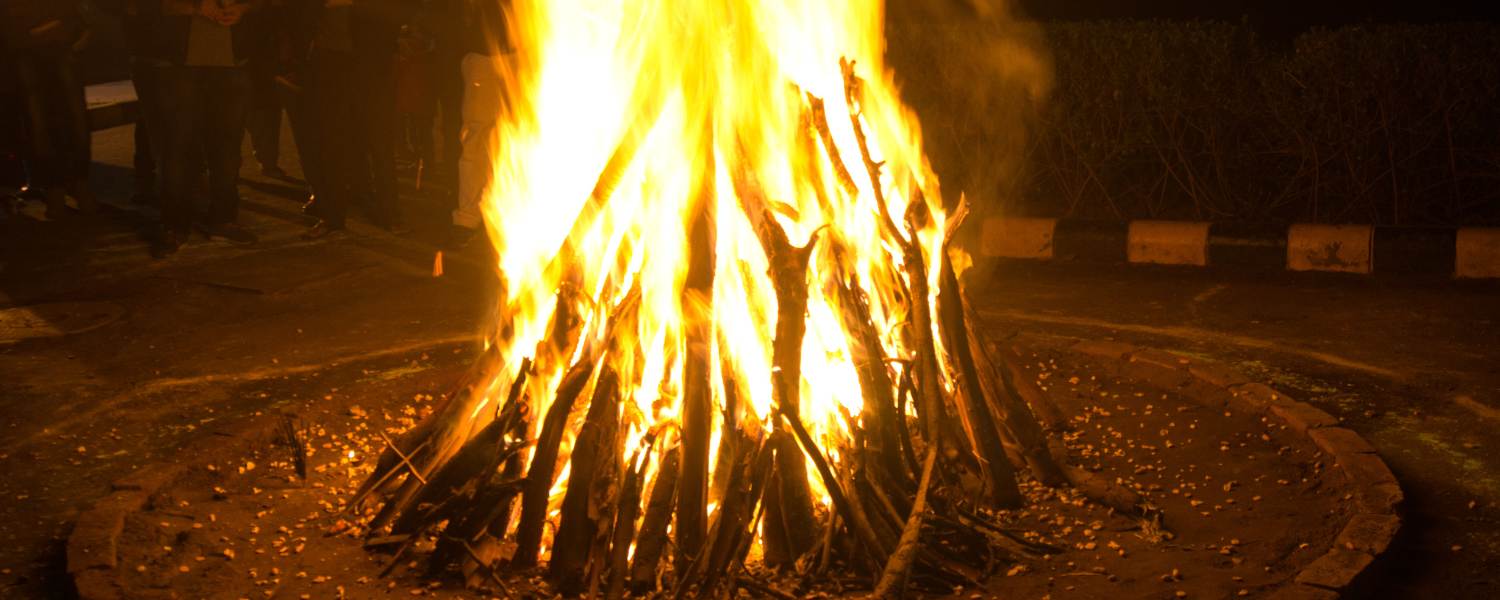
Lohri, a festival celebrated predominantly in Punjab, marks the end of winter and the onset of longer days. Bonfires are lit, and people gather around to sing and dance, symbolizing the passing of the cold season. Lohri fosters a sense of community spirit, with people coming together to share joy, warmth, and the bounty of the winter harvest.
Bonfires are lit in the evening, around which families and friends gather to sing traditional songs and dance to the dhol (drum) beats. The festival is also synonymous with distributing sweets, nuts, and jaggery among loved ones.
Lohri embodies the gratitude and celebration of a bountiful harvest, illustrating the regional diversity of religious festivals in India.
19. Dussehra: Triumph of Good Over Evil

Dussehra, also known as Vijayadashami, is a Hindu festival that symbolizes the victory of good over evil. The festival marks the culmination of the Navratri celebrations and the triumph of Lord Rama over the demon king Ravana.
Effigies of Ravana are burned in large public gatherings, signifying the eradication of evil forces. Dussehra is a celebration of righteousness and the eventual triumph of truth.
The festival’s highlight is the reenactment of the mythical tale of Lord Rama’s victory over the demon king Ravana, symbolizing the triumph of righteousness. Enormous effigies of Ravana, his brother Kumbhakarna, and his son Meghanada are erected and set ablaze, creating a spectacular display of fireworks and cheers from the crowd.
Dussehra is a powerful reminder of the eternal battle between virtue and vice, showcasing the timeless themes of religious festivals in India.
20. Bihu: Assam’s Agricultural Festivity
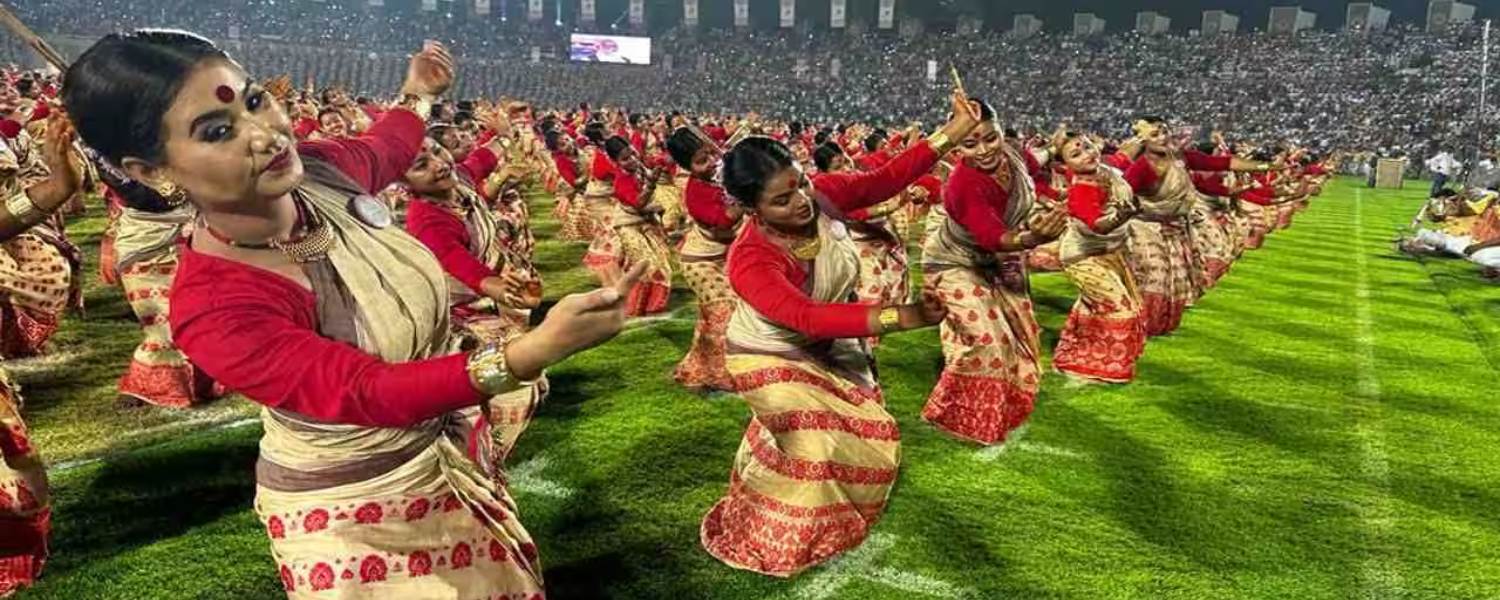
Bihu, a set of three Assamese festivals, marks the agricultural cycle and celebrates the different phases of farming. The festival involves traditional dance forms, feasts, and cultural performances. Bihu showcases the unity of the community in celebrating agricultural abundance and fostering a sense of gratitude towards nature.
The festivities include traditional Assamese folk dances like the Bihu dance, where men and women come together to celebrate the harvest season with vibrant performances. Music, feasting, and exchanging homemade sweets are integral to Bihu celebrations.
This festival beautifully reflects the deep connection between the people of Assam and their agricultural heritage, exemplifying the diversity of religious festivals in India.
21. Karthigai Deepam: Festival of Lights in Tamil Nadu

Karthigai Deepam, celebrated in the southern state of Tamil Nadu, is a festival of lights that coincides with the full moon day in the month of Karthigai. Homes and temples are illuminated with lamps, and a traditional dish, ‘Pori’, is prepared. The festival symbolizes the triumph of light over darkness and kindles a sense of spiritual awakening.
Religious festivals in India are known for their grandeur and diversity, and one such celebration is Karthigai Deepam, a spectacular festival of lights celebrated predominantly in Tamil Nadu. Karthigai Deepam is a religious festival that holds a significant place in the hearts of Tamil people.
It falls in the Tamil month of Karthigai, which usually corresponds to November or December in the Gregorian calendar. The festival’s main attraction is the lighting of thousands of oil lamps and bonfires in homes and temples, creating a mesmerizing spectacle that illuminates the entire state.
22. Buddha Purnima: Commemorating the Enlightened One

Buddha Purnima, also known as Vesak, commemorates the birth, enlightenment, and death of Lord Buddha. Devotees visit Buddhist temples, participate in prayers, and engage in acts of kindness and compassion.
Buddha Purnima reflects the teachings of non-violence, compassion, and mindfulness, contributing to the spiritual diversity of religious festivals in India. Among the numerous religious festivals in India, Buddha Purnima stands out as a profound celebration that honours the birth, enlightenment, and death of Siddhartha Gautama, also known as Lord Buddha.
Celebrated with great reverence and devotion, Buddha Purnima usually falls in April or May, depending on the lunar calendar. Buddhists from across the country come together to commemorate the life and teachings of the Enlightened One.
Devotees adorn temples and monasteries with prayer flags and gather to offer prayers, meditate, and reflect on the Buddha’s teachings of compassion and enlightenment.
23. Mahavir Jayanti: Celebrating the Founder of Jainism

In the tapestry of religious festivals in India, Mahavir Jayanti is a special day that marks the birth anniversary of Lord Mahavira, the 24th Tirthankara and the founder of Jainism. Celebrated with deep reverence and devotion by the Jain community, this festival usually falls in March or April.
On Mahavir Jayanti, Jains visit temples, pray, meditate, and participate in charitable activities. The day is a reminder of Lord Mahavira’s teachings of non-violence, truth, and spiritual purity, which continue to inspire countless individuals in their pursuit of a virtuous life.
24. Chhath Puja: Sun Worship in Bihar
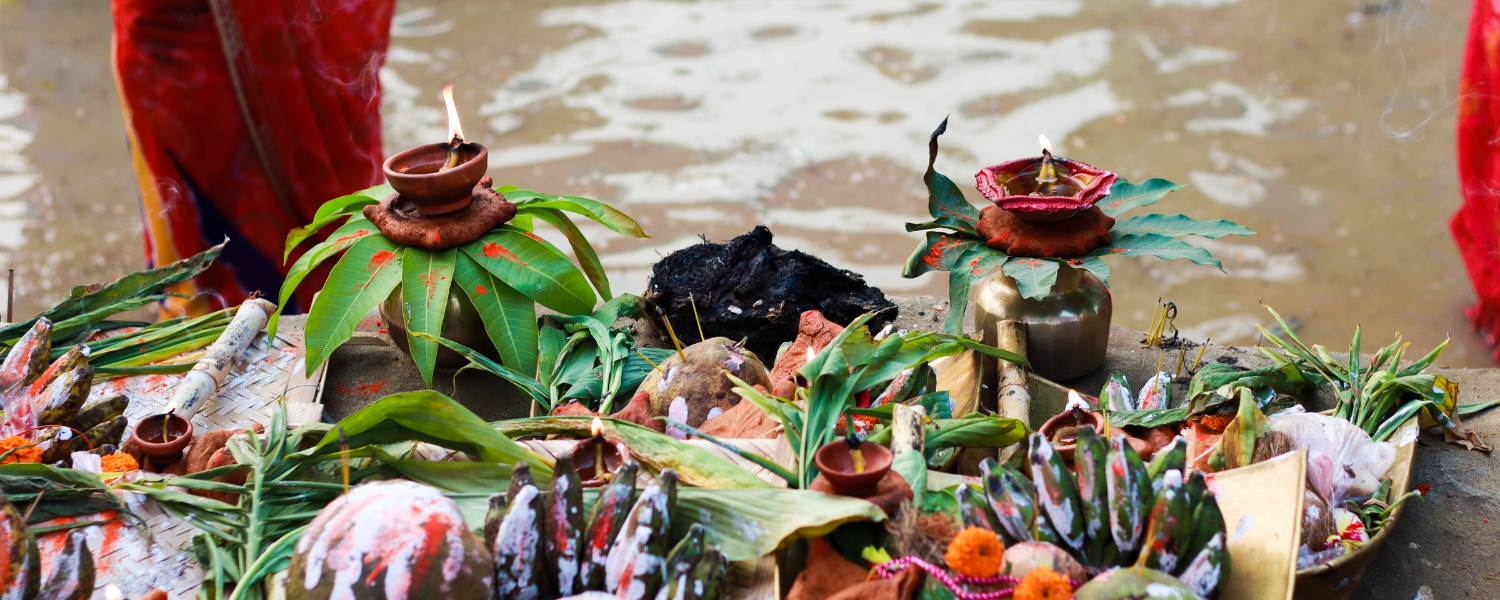
Chhath Puja is a unique and colourful festival that finds its place among the religious festivals in India. It is primarily celebrated in northern Bihar but has also gained popularity in other regions. This ancient Hindu festival is dedicated to the worship of the Sun God, Surya, and Chhathi Maiya, believed to be the sister of Surya.
Chhath Puja takes place over four days during October or November, with devotees observing fasts and offering prayers at the banks of rivers or ponds.
25. Eid-e-Milad: Commemorating the Prophet’s Birthday

Among the various religious festivals in India, Eid-e-Milad holds a significant place in the hearts of Muslims as it commemorates the birth of the Prophet Muhammad.
This joyous occasion falls on the 12th day of Rabi’ al-Awwal in the Islamic lunar calendar, which typically corresponds to a different date each year in the Gregorian calendar. Devotees gather in mosques and homes to recite religious verses, offer prayers, and exchange greetings.
People fill the atmosphere with love and reverence for the Prophet, celebrating with special feasts and the distribution of sweets.
26. Rath Yatra: Chariot Procession in Puri

Rath Yatra, known as the Chariot Festival, is one of India’s most vibrant and revered religious festivals. It takes place in the coastal town of Puri, Odisha, and celebrates the journey of Lord Jagannath, Lord Balabhadra, and Devi Subhadra from the Jagannath Temple to the Gundicha Temple.
This grand procession, usually in June or July, involves thousands of devotees pulling elaborately decorated chariots. Seeing these massive chariots, accompanied by traditional music and dance performances, is a mesmerizing experience. The Rath Yatra symbolizes the divine journey of the deities and attracts millions of pilgrims and tourists alike.
27. Kumbh Mela: The Grand Confluence of Pilgrims
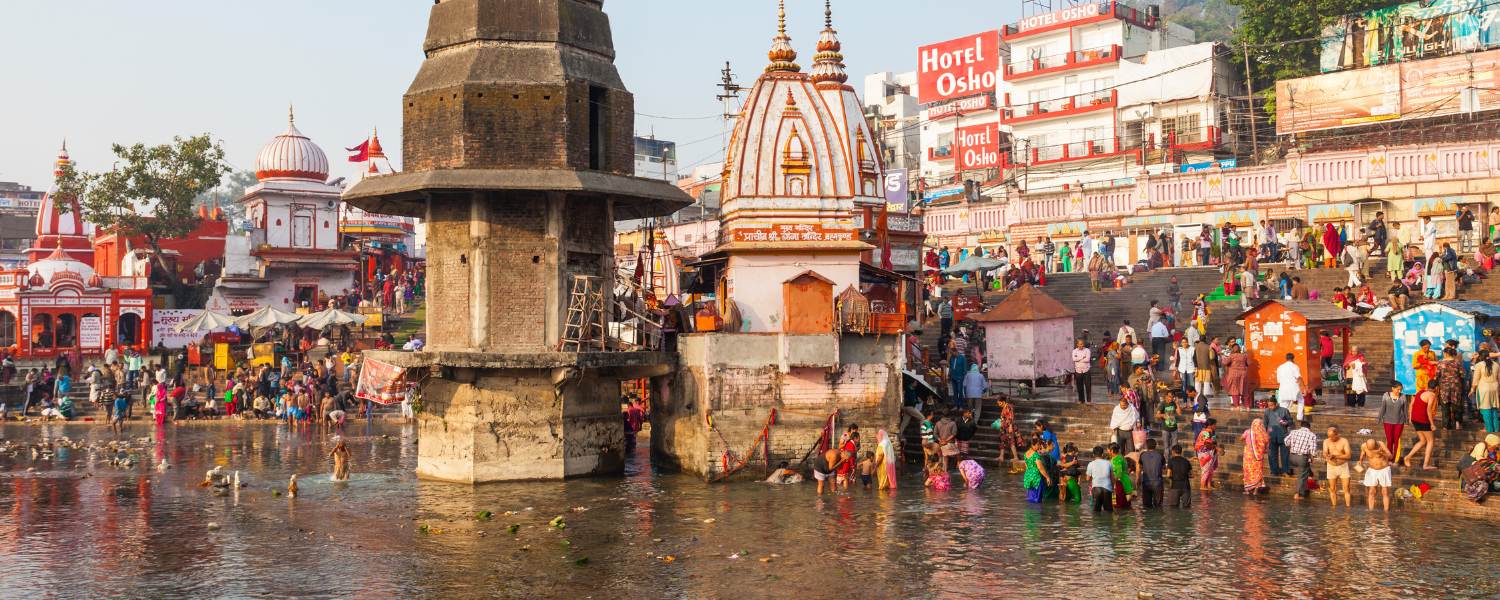
The Kumbh Mela, a massive gathering of pilgrims, is one of the largest religious festivals in the world. Held at four different locations in India—Prayagraj, Haridwar, Nashik, and Ujjain—Kumbh Mela attracts millions of devotees who come to bathe in the sacred rivers to cleanse their sins.
The festival is a testament to the diversity of religious festivals in India and the shared quest for spiritual purification. Religious festivals in India are a vibrant tapestry of traditions and beliefs, and none exemplify this diversity more than the Kumbh Mela.
This grand confluence of pilgrims is one of the largest religious gatherings in the world. Held at four sacred riverbanks, namely Prayagraj, Haridwar, Nashik, and Ujjain, this festival attracts millions of devotees seeking spiritual cleansing and salvation. The Kumbh Mela is a religious and cultural event showcasing India’s rich heritage and devotion.
28. Basant Panchami: Welcoming Spring with Saraswati Puja
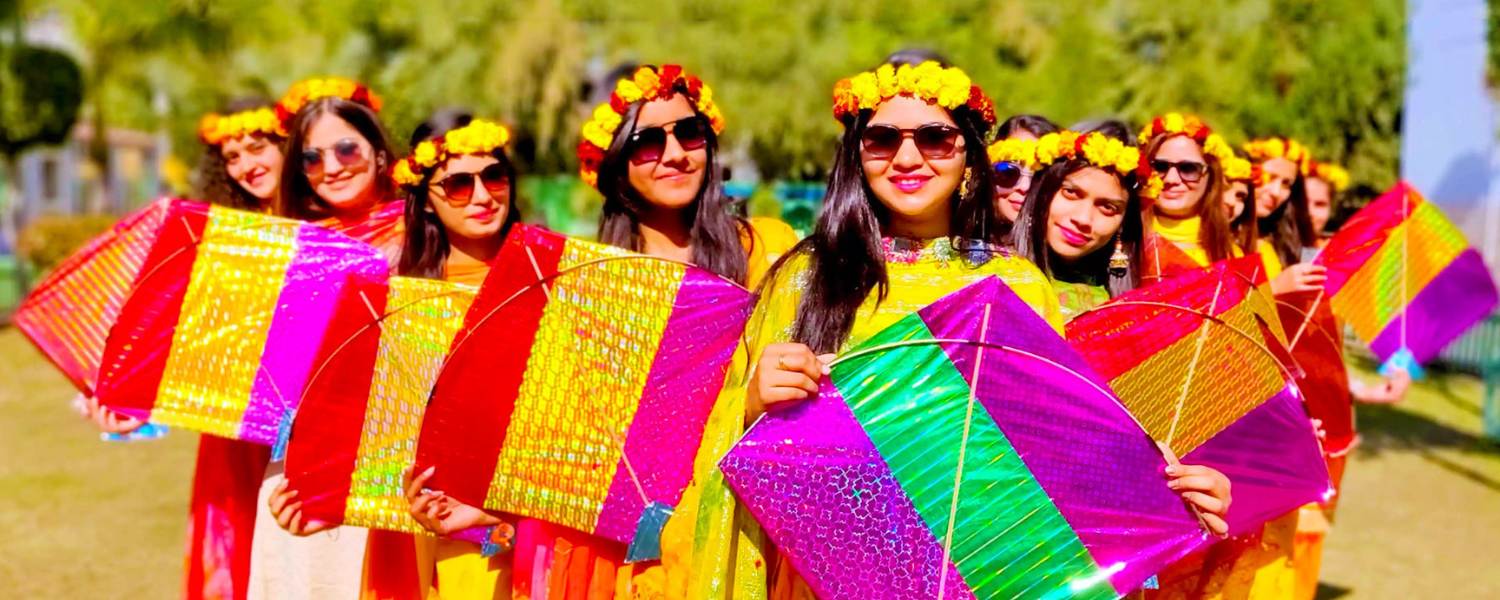
Basant Panchami marks the arrival of spring and is celebrated with the worship of Goddess Saraswati, the deity of knowledge and wisdom. Schools and educational institutions organize special prayers, and people wear yellow attire to symbolize the season’s vibrancy.
Basant Panchami fosters a sense of intellectual pursuit and creativity. Basant Panchami, celebrated with great enthusiasm, marks the onset of spring and is a prominent religious festival in India. The keyword “religious festivals in India” perfectly encapsulates the essence of this occasion.
Devotees welcome the season by adorning themselves in yellow attire, symbolizing prosperity and warmth. Saraswati Puja, the worship of the goddess of knowledge and arts, takes centre stage. Educational institutions organize special prayers to seek her blessings, emphasizing the importance of wisdom and learning.
29. Gurudwara Festivals: Sikh Celebrations of Devotion
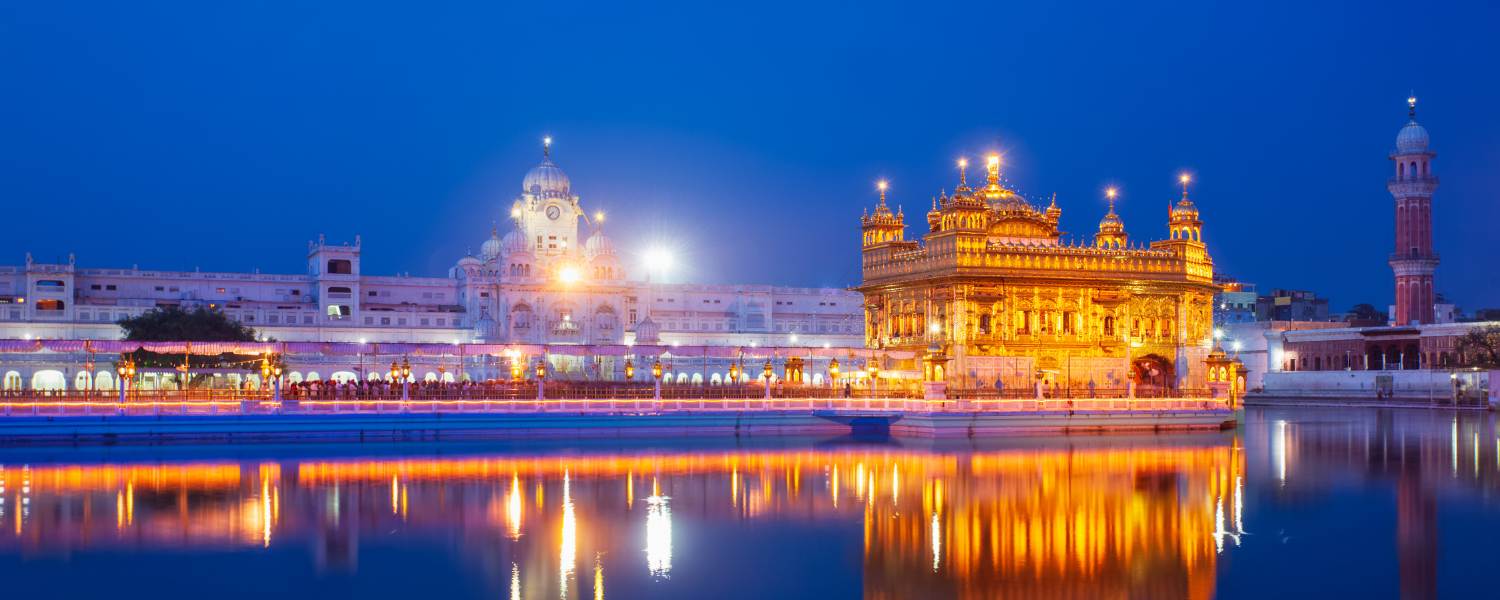
Sikhism, a religion that originated in the Indian subcontinent, has several festivals celebrated in Gurudwaras. Guru Nanak Jayanti, Guru Gobind Singh Jayanti, and Baisakhi are prominent Sikh festivals. These celebrations involve prayers, community service, and meal sharing, reflecting equality, selfless service, and devotion.
Sikh religious festivals in India are a testament to the spirit of devotion and community. The Gurudwara, a place of worship for Sikhs, becomes a hub of activity during these celebrations. Prayers mark events like Guru Nanak Jayanti and Vaisakhi, hymn singing, and communal meals known as “langar.”
The keyword “Religious Festivals in India” underscores the significance of these festivals in showcasing Sikh values of equality, selflessness, and spirituality.
30. Teej: Women’s Celebration of Monsoon

Teej, predominantly celebrated by women, marks the arrival of the monsoon season. Women participate in rituals, swing on decorated swings, and apply henna as a part of the festivities. Teej symbolizes the joy of nature’s renewal and the celebration of marital bliss, contributing to the vibrant spectrum of religious festivals in India.
Women celebrate Teej, a quintessential Indian religious festival, enthusiastically. Falling during the monsoon season signifies the joy of rain and the renewal of nature. The keyword “religious festivals in India” perfectly fits Teej, as it highlights the festival’s deep-rooted cultural and religious significance.
Women fast and pray for the well-being of their husbands and families, with colourful processions and traditional dances adding to the festive atmosphere.
31. Kali Puja: Bengal’s Worship of the Dark Goddess
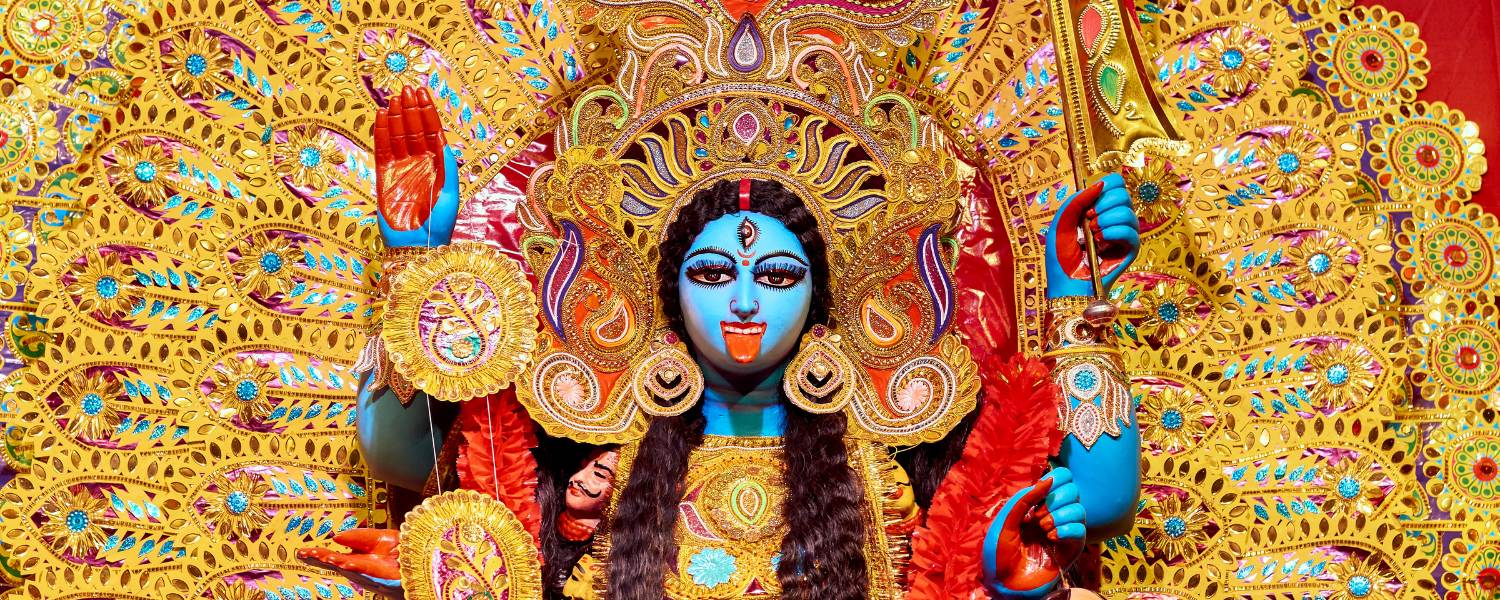
People celebrate Kali Puja, predominantly in West Bengal, to worship Goddess Kali. The festival involves elaborate rituals, cultural performances, and the creation of artistic idols of the fierce deity. Kali Puja reflects the acceptance of the dualities of life and the belief in the transformative power of the divine.
Religious festivals in India are as diverse as the nation itself, and Kali Puja stands out as a powerful and enchanting celebration in the state of Bengal. This festival, dedicated to the Dark Goddess Kali, is a vibrant and intense affair.
People observe Kali Puja with great devotion and enthusiasm, particularly in West Bengal, where it stands as one of the most significant religious festivals.
The festival usually falls during the Diwali season, and people have to worship the fierce yet protective goddess, seeking her blessings for protection from evil forces and darkness.
32. Guru Nanak Jayanti: Birth Anniversary of Guru Nanak
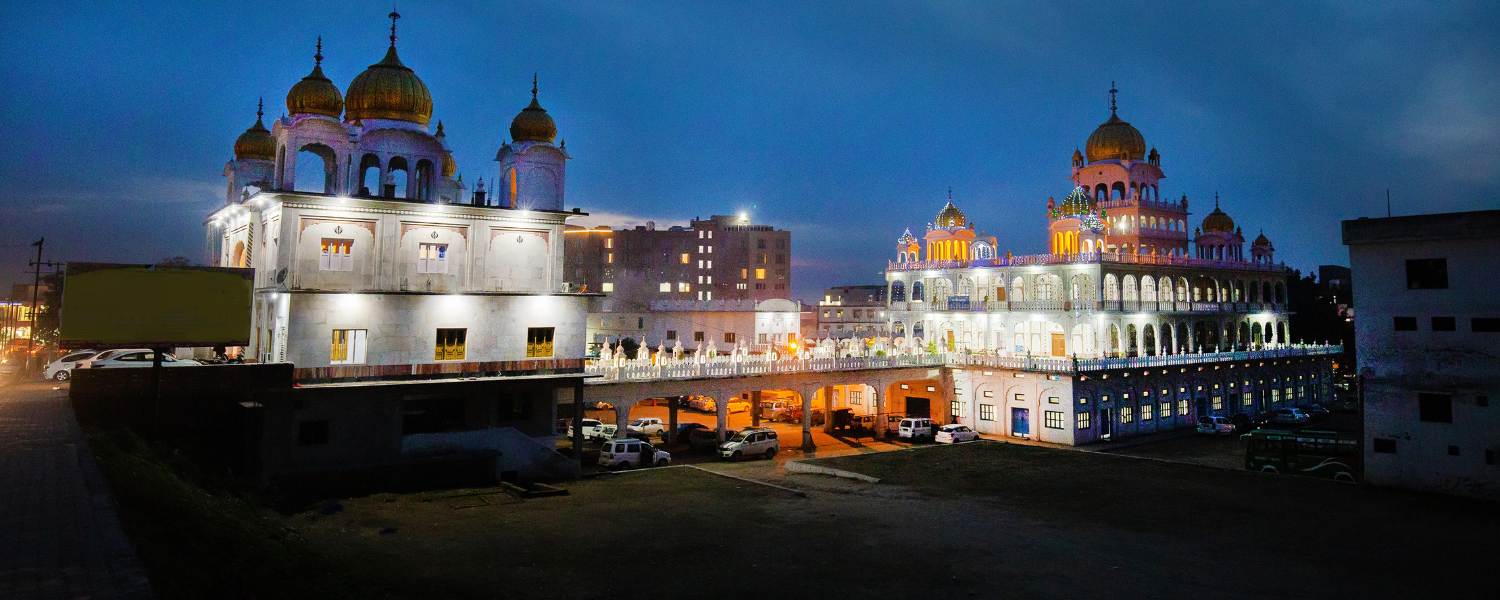
Guru Nanak Jayanti, also known as Gurpurab, celebrates the birth anniversary of Guru Nanak, the founder of Sikhism. Devotees visit Gurudwaras, participate in prayers, and engage in community service to honour Guru Nanak’s teachings of equality, justice, and selfless service.
Guru Nanak Jayanti, also known as Guru Nanak Gurpurab, is a prominent religious festival in India that celebrates the birth anniversary of Guru Nanak Dev Ji, the founder of Sikhism. This joyous occasion is marked with grand processions, prayers, and devotional singing in gurdwaras (Sikh temples) nationwide.
Religious festivals in India like Guru Nanak Jayanti are a testament to the nation’s religious diversity, emphasizing unity and the spirit of devotion that transcends all boundaries.
33. Mahakaleshwar Utsav: Celebrating Lord Shiva in Ujjain

People hold Mahakaleshwar Utsav in Ujjain as a grand celebration dedicated to Lord Shiva.The festival includes processions, cultural performances, and rituals at the Mahakaleshwar Jyotirlinga, one of the twelve sacred shrines of Lord Shiva. Devotees from far and wide participate in this spiritual extravaganza.
India’s spiritual heritage deeply roots in the worship of Lord Shiva, and Mahakaleshwar Utsav in Ujjain exemplifies this devotion. Ujjain, a city known for its sacredness, hosts this grand celebration as devotees gather to honour Lord Shiva.
The festival involves elaborate rituals, including bathing the Shiva lingam, religious processions, and cultural performances. Mahakaleshwar Utsav showcases the deep connection that many Indians have with Lord Shiva and exemplifies the rich tapestry of religious festivals in India.
34. Hemis Festival: Buddhist Revelry in Ladakh
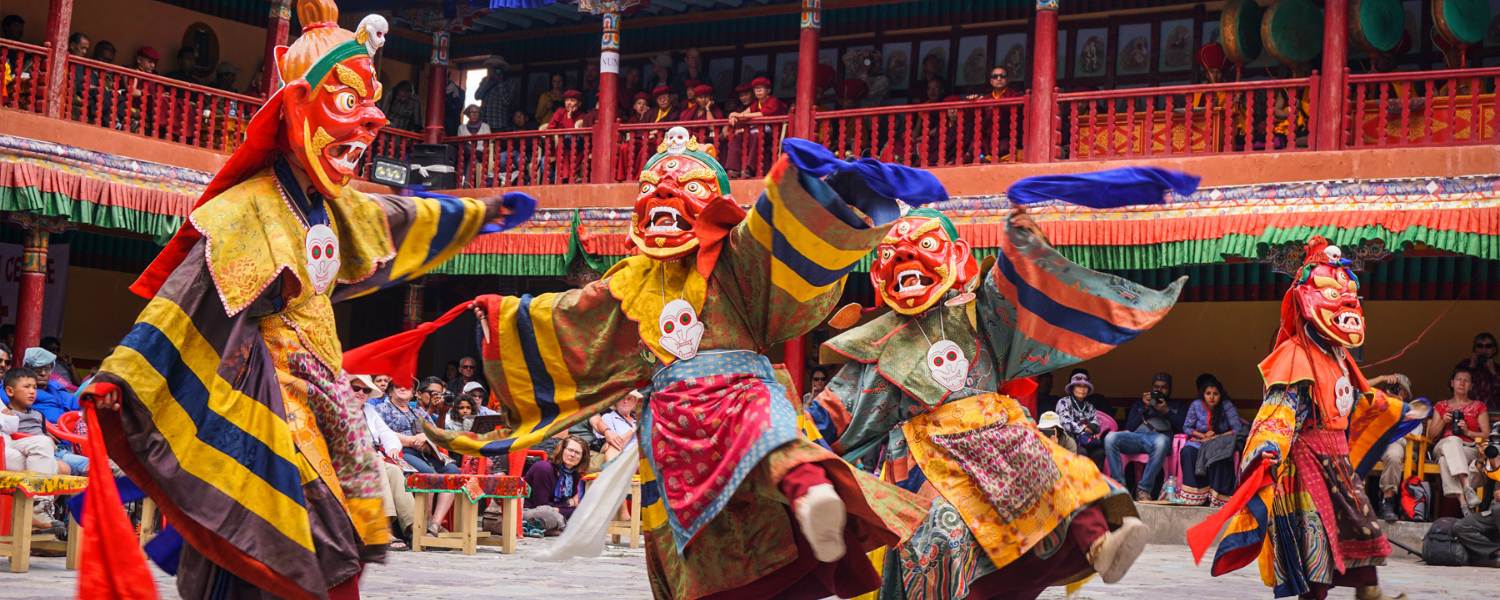
The Hemis Festival, celebrated in the Hemis Monastery in Ladakh, commemorates the birth anniversary of Guru Padmasambhava, the founder of Tibetan Buddhism. The festival features vibrant masked dances, rituals, and the display of a massive thangka (religious painting) of Guru Rinpoche, attracting both locals and tourists.
The Hemis Festival, celebrated in the stunning region of Ladakh, showcases India’s unique cultural and religious diversity. This Buddhist festival commemorates the birth anniversary of Guru Padmasambhava, the founder of Tibetan Buddhism.
The vibrant masked dances, traditional music, and colourful costumes feast on the senses. It is a striking example of how religious festivals in India encapsulate the rich cultural heritage and spiritual practices that define the nation.
35. Rath Yatra of Ahmedabad: Lord Jagannath’s Chariot Journey
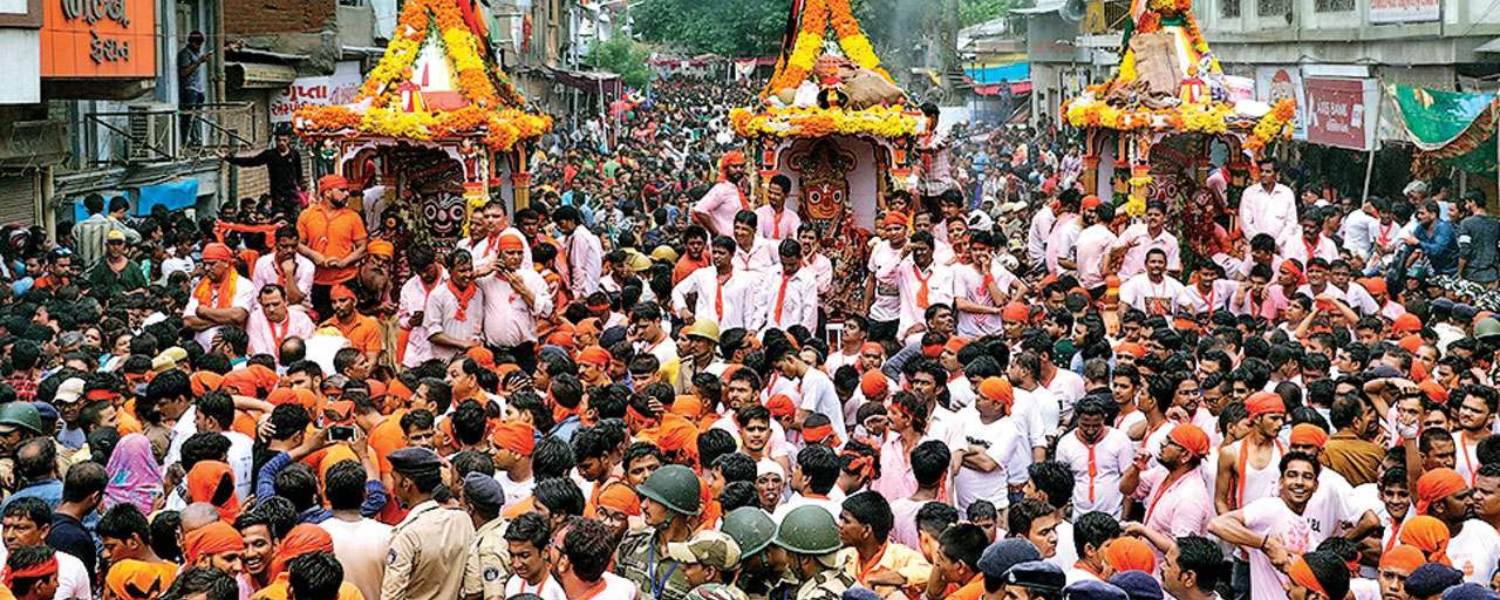
People celebrate the Rath Yatra grandly in Ahmedabad, Gujarat, apart from Puri. The procession involves the ceremonial pulling of chariots carrying the idols of Lord Jagannath, Lord Balabhadra, and Devi Subhadra.
The vibrant colours, holy zeal, and cultural performances make it a significant religious event in the state. Religious festivals in India often feature grand processions that captivate the hearts of the masses. One such event is the Rath Yatra of Ahmedabad, where devotees gather to witness Lord Jagannath, Lord Balabhadra, and Goddess Subhadra embark on a chariot journey through the city’s streets.
The festival is marked by immense devotion, with thousands of people pulling the massive chariots, chanting hymns, and seeking the blessings of the deities. It is a testament to the religious fervour and unity that these festivals bring forth.
36. Thrissur Pooram: Kerala’s Grand Elephant Festival
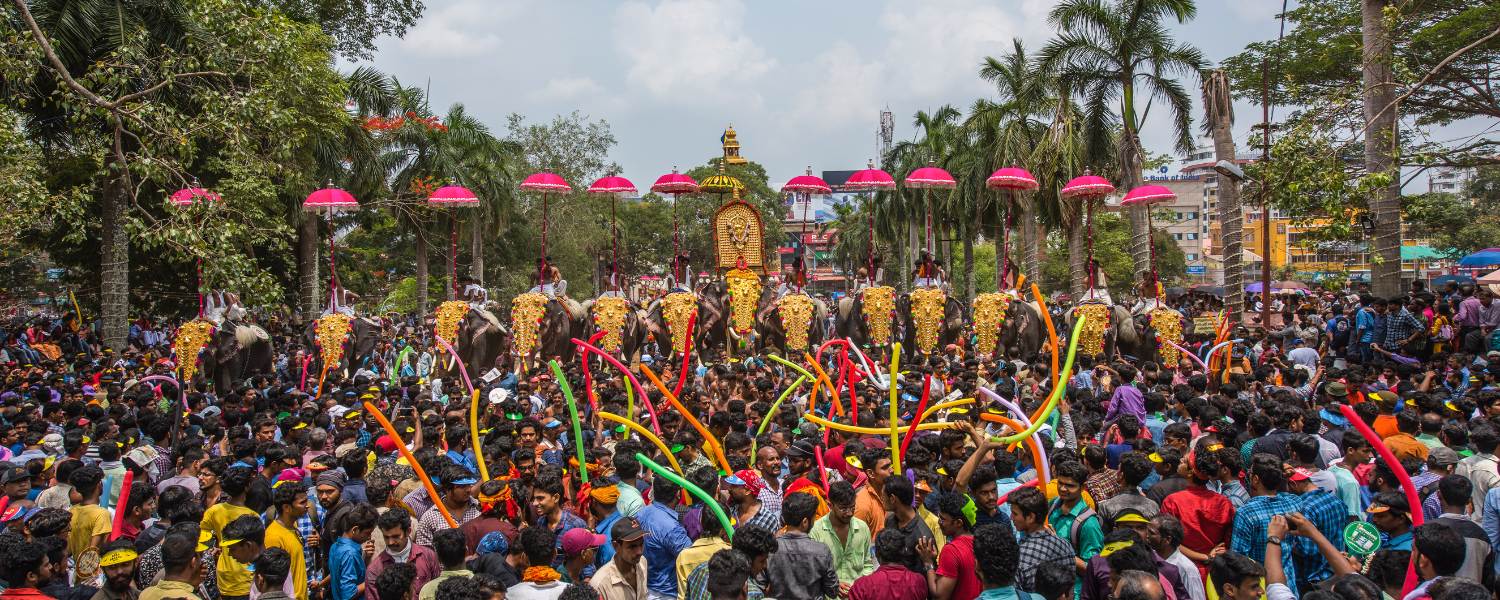
People hold the spectacular temple festival, Thrissur Pooram, in Thrissur, Kerala. The festival brings together various communities to celebrate culture and spirituality. Kerala’s Thrissur Pooram is a grand spectacle that showcases the fusion of tradition, culture, and spirituality.
This renowned elephant festival is celebrated with unmatched enthusiasm and vigour, featuring a spectacular procession of beautifully decorated elephants. The heart-thumping sound of traditional drums and the mesmerizing fireworks display add to the festivities.
Thrissur Pooram is a shining example of how religious festivals in India are a vibrant blend of tradition, devotion, and communal spirit.
37. Urs at Ajmer Sharif: Sufi Mysticism in Rajasthan

The Urs at Ajmer Sharif is an annual Sufi festival commemorating the death anniversary of Khwaja Moinuddin Chishti. Devotees from different religious backgrounds gather at the Ajmer Sharif Dargah to seek blessings, offer prayers, and partake in the spiritually charged atmosphere.
Religious festivals in India are diverse and vibrant, offering a glimpse into the country’s rich cultural tapestry. One such celebration is the Urs at Ajmer Sharif in Rajasthan, a testament to Sufi mysticism. Every year, thousands of devotees from different faiths gather at the shrine of Khwaja Moinuddin Chishti in Ajmer to pay their respects and seek blessings.
This spiritual gathering is a harmonious blend of Hindu and Muslim traditions, symbolizing unity and tolerance, which are intrinsic to India’s cultural ethos
38. Rath Yatra of Kolkata: Bengal’s Devotional Procession
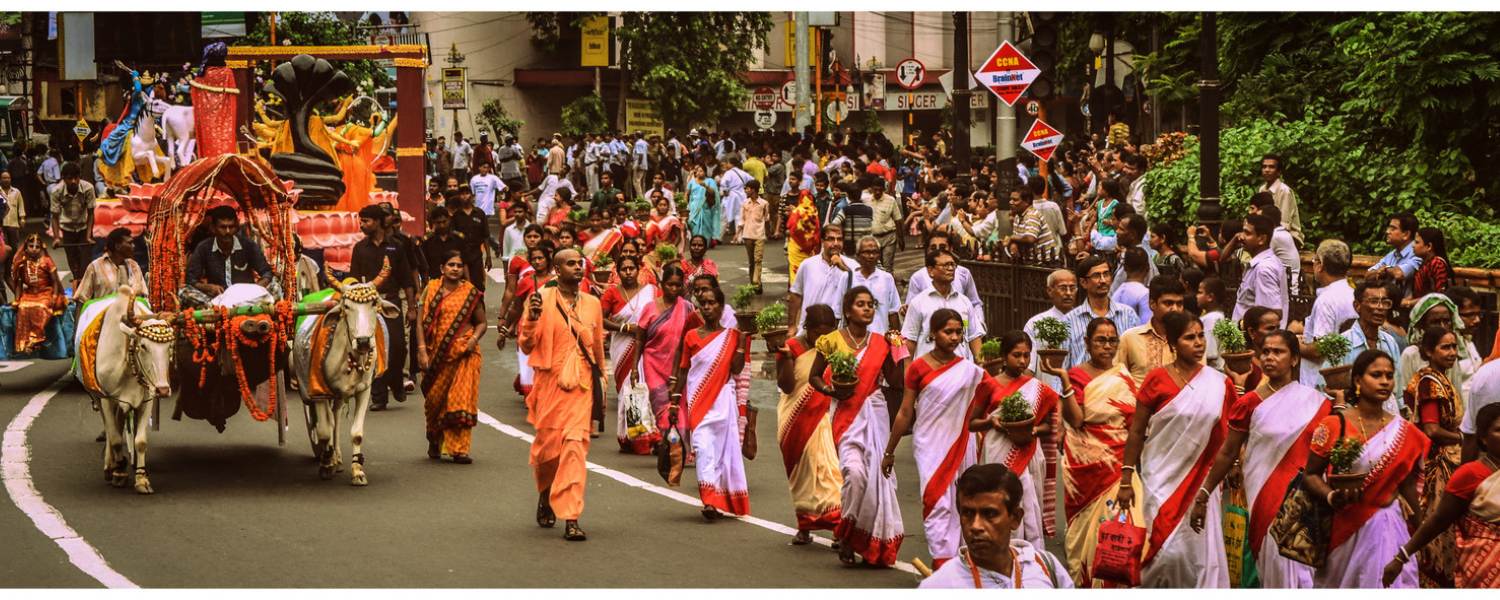
Kolkata, too, embraces the grandeur of the Rath Yatra, showcasing the devotion to Lord Jagannath. The procession winds through the city streets, accompanied by religious chants and cultural performances. The festival draws people from all walks of life, reinforcing the spirit of unity and reverence.
The Rath Yatra of Kolkata is a grand spectacle and an integral part of Bengal’s religious festivals in India. Devotees place Lord Jagannath, Lord Balabhadra, and Devi Subhadra in lavishly decorated chariots and parade them through the streets of Kolkata during this holy procession.
The keyword “religious festivals in India” resonates with the sincere devotion and enthusiasm of the devotees who throng the streets, pulling the chariots while chanting hymns and prayers. It’s a vibrant display of faith and a reminder of India’s rich spiritual heritage.
39. Ganga Sagar Mela: Spiritual Confluence at the Bay of Bengal

Ganga Sagar Mela is an annual pilgrimage where devotees dip at the confluence of the Ganges River and the Bay of Bengal. Held on Sagar Island, West Bengal, the festival attracts millions of people who believe that the sacred waters cleanse sins. It is a unique blend of religious fervour and natural serenity.
The Ganga Sagar Mela is a massive gathering of pilgrims and seekers, exemplifying the essence of religious festivals in India. This annual event sees millions of people dip at the confluence of the Ganges River and the Bay of Bengal to cleanse their sins and seek salvation.
People believe that a dip at this holy site can absolve one of their past sins, giving the festival immense spiritual significance. The resonance of spirituality and devotion during the Ganga Sagar Mela is truly remarkable.
40. Rann Utsav: Cultural Extravaganza in the White Desert
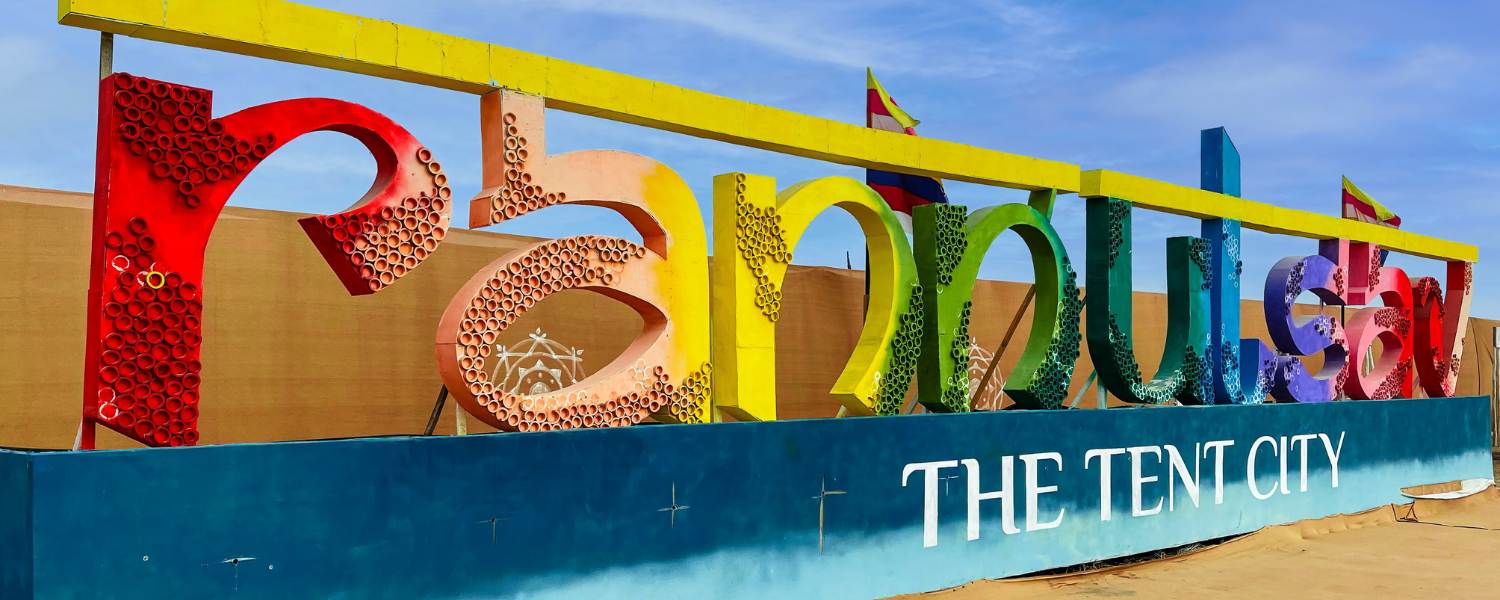
People hold the vibrant cultural festival, Rann Utsav, in the white desert of Kutch, Gujarat. The festival features traditional dance, music, handicrafts, and the breathtaking sight of the Great Rann of Kutch under the full moon.
It showcases the diversity of India’s cultural tapestry. Rann Utsav, celebrated in the pristine white desert of Gujarat, is a unique amalgamation of culture and spirituality, setting it apart from other religious festivals in India.
The festival showcases Gujarat’s rich heritage and traditions with various activities, from folk dances and music to artisan exhibitions. The keyword “religious festivals in India” may not seem overtly relevant here.
However, the spiritual aspect is subtly present, as the festival provides a platform for cultural enrichment and self-discovery, making it a spiritually enriching experience.
41. Muharram: Commemorating Sacrifice and Reflection

Religious festivals in India hold a profound significance, weaving together diverse communities through shared traditions and values. Muharram, an essential Islamic observance, marks the beginning of the Islamic lunar calendar.
Commemorated by both Sunni and Shia Muslims, Muharram is a time for reflection, mourning, and spiritual growth.The rituals often include processions, recitations, and the reenactment of the Battle of Karbala, emphasizing the principles of sacrifice and justice.
This poignant festival exemplifies the unity that religious festivals in India foster, transcending sectarian boundaries and fostering a sense of shared humanity.
42. Rama Navami: Celebrating the Birth of Lord Rama
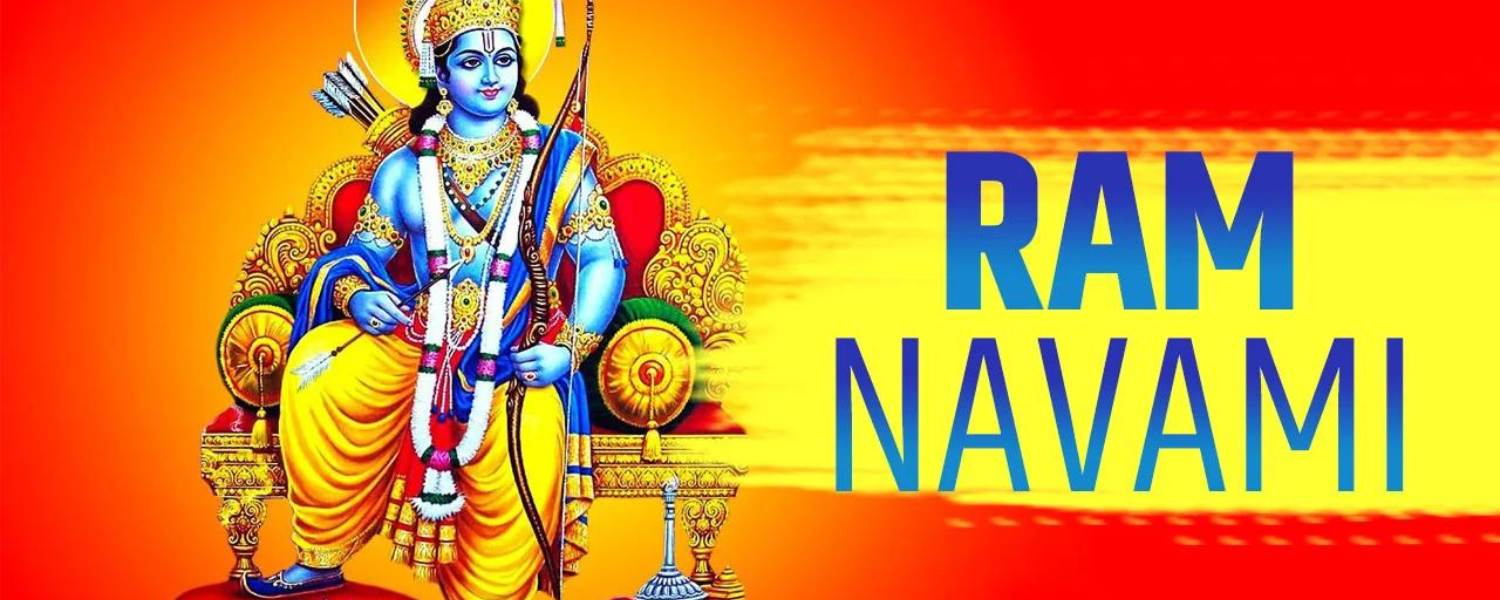
In the kaleidoscope of religious festivals in India, Rama Navami shines brightly, celebrating the birth of Lord Rama, a revered figure in Hinduism. On the ninth day of Chaitra month, devotees observe fasts, visit temples, and engage in prayer to honour the virtues of Lord Rama.
The festival, marked by bhajans and recitations of the Ramayana, underscores the importance of dharma (righteousness) and devotion. Rama Navami serves as a vibrant thread in the fabric of religious diversity, fostering a sense of unity and shared spirituality among Hindus across the country.
43. Nag Panchami: Worshiping the Serpent Deity
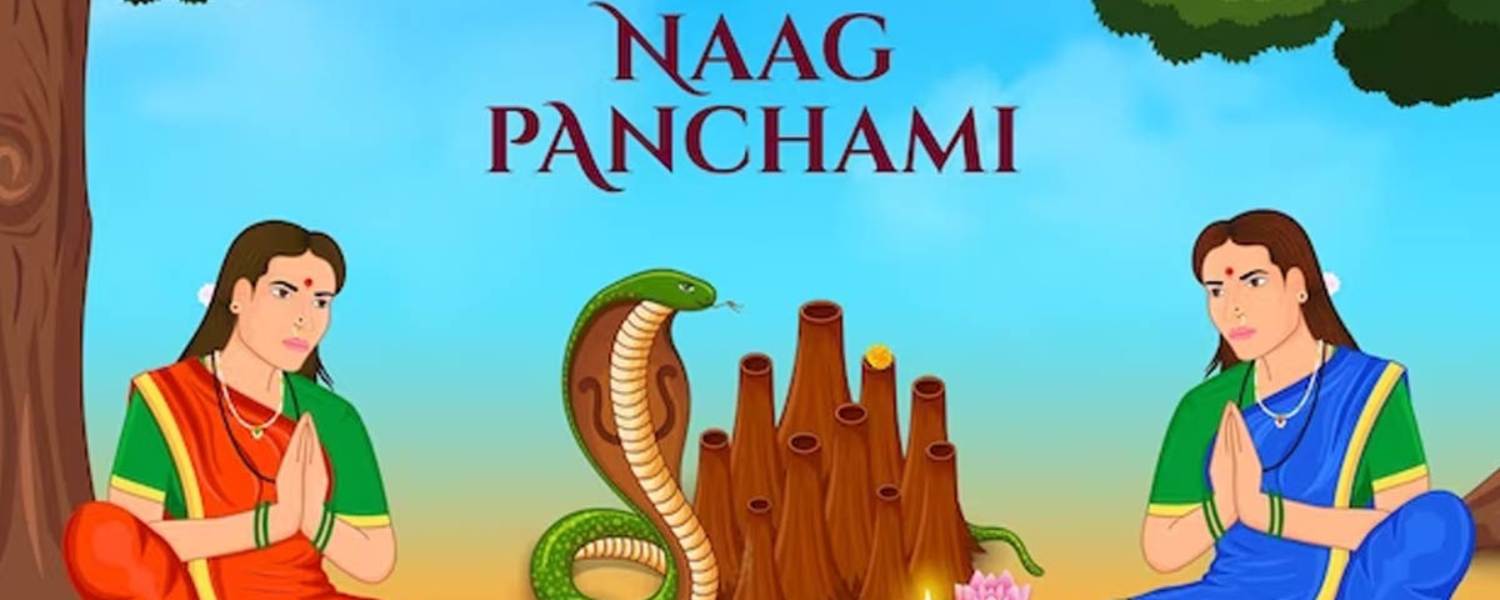
People celebrate Nag Panchami, a unique festival among religious celebrations in India, by worshipping Nagas, or serpent deities. Falling on the fifth day of the bright half of the lunar month of Shravan, this festival reflects the country’s rich cultural tapestry.
Devotees in Maharashtra, Karnataka, and parts of North India offer prayers to snake idols, seeking protection and blessings. The festivities embody the harmonious coexistence of various beliefs and rituals, showcasing India’s pluralistic nature of religious celebrations.
44. Gudi Padwa: Welcoming the New Year with Joy

As one of the many religious festivals in India, Gudi Padwa heralds the Hindu New Year with vitality and joy. Celebrated predominantly in Maharashtra, this festival marks the onset of spring and symbolizes victory and prosperity.
People hoist the traditional Gudi, adorned with bright fabrics and neem leaves, outside their homes. The festive atmosphere, accompanied by music, dance, and special delicacies, brings communities together in shared revelry. Gudi Padwa, with its regional variations, stands as a testament to the kaleidoscopic nature of religious diversity in India.
45. Chaitra Navratri: Nurturing Devotion and Feminine Power

Chaitra Navratri, a vibrant segment of religious festivals in India, is dedicated to the worship of Goddess Durga and her various forms. Commencing on the first day of the Hindu month of Chaitra, this festival spans nine nights of devotion, prayer, and fasting.
“Devotees charge the atmosphere with spirituality as they participate in rituals and cultural events. Chaitra Navratri embodies the essence of feminine power and signifies the triumph of good over evil. The celebrations, observed with enthusiasm across the country, showcase the unity inherent in diversity during religious festivals in India.
46. Kojagari Lakshmi Puja: Invoking Prosperity and Abundance

People celebrate Kojagari Lakshmi Puja, a lesser-known gem among religious festivals in India, primarily in West Bengal and other parts of Eastern India. Falling on the full moon night of Ashwin month, this festival venerates Goddess Lakshmi, the harbinger of wealth and prosperity.
Devotees fast during the day, breaking it after the puja at night. The celebration emphasizes the significance of prosperity and devotion to Goddess Lakshmi, fostering a sense of communal harmony and shared aspirations for abundance among the diverse communities celebrating this festival.
47. Gangaur: Celebrating Divine Union

Gangaur is a vibrant and traditional festival celebrated predominantly in the Indian state of Rajasthan. The festival, which usually takes place in March or April, holds immense religious significance and is dedicated to Goddess Gauri, an incarnation of Parvati, and her consort, Lord Shiva.
Religious festivals in India, like Gangaur, exemplify the profound cultural diversity and spiritual hunger that unites the country. ‘Gangaur’ is derived from ‘Gana,’ meaning Lord Shiva, and ‘Gaur,’ which symbolizes Goddess Gauri.
The festivities extend over 18 days, during which married and unmarried women engage in rituals and celebrations to seek the blessings of the divine couple for the well-being and longevity of their spouses.The vibrant processions during Gangaur are a sight to behold, characterized by women dressed in colourful traditional attire carrying beautifully adorned Gauri idols on their heads.
It reflects the amalgamation of spirituality and artistic expression inherent in religious festivals in India. The streets resonate with devotional songs, folk dances, and the aroma of incense, creating an atmosphere charged with divine energy.
The festival culminates with the immersion of the idols in water bodies, symbolizing the departure of the goddess to her celestial abode and marking the end of the joyous celebrations.
48. Jhulan Yatra: Swinging with Divine Devotion
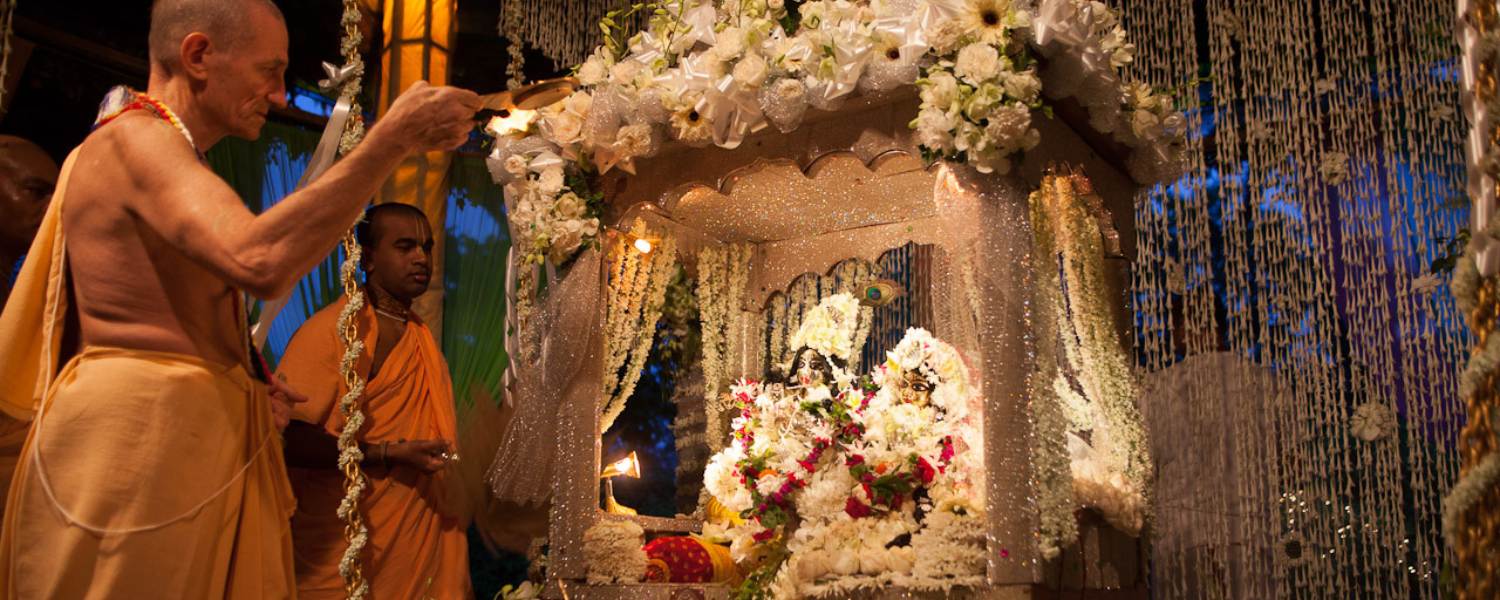
People celebrate the Jhulan Yatra, a prominent religious festival in India, enthusiastically in West Bengal and Odisha. This festival, usually observed in the month of Shravan, revolves around the divine pastimes of Lord Krishna and Radha, particularly their romantic episodes in Vrindavan.
During this festival, people set up beautifully decorated swings in temples dedicated to Radha and Krishna, as ‘Jhulan’ refers to a swing. Devotees, dressed in vibrant attire, participate in swinging the divine couple to express their love and devotion.
The soul-stirring melodies of devotional songs, the fragrance of fresh flowers, and the sight of intricately adorned swings create a spiritually charged ambiance during the Jhulan Yatra. This festival exemplifies people’s deep connection with the divine, transcending the mundane aspects of life.
It serves as a reminder of the eternal love and bond between Radha and Krishna, inspiring devotees to seek a similar connection with the divine
49. Puthandu (Tamil New Year): Embracing New Beginnings

The Tamil community in India and worldwide celebrates Puthandu, also known as the Tamil New Year, as a significant religious festival. Falling in mid-April, Puthandu marks the beginning of the Tamil calendar year. The essence of Puthandu lies in embracing new beginnings with a spirit of optimism and gratitude.
As with many religious festivals in India, Puthandu is a time for family gatherings, feasts, and prayers for prosperity and well-being. The celebrations typically involve the preparation of a special dish called ‘Puthandu Pachadi,’ a concoction of various flavours representing the different facets of life.
Devotees visit temples to seek the blessings of the divine for a harmonious and prosperous year ahead. Puthandu, like other religious festivals in India, embodies the cultural richness and spiritual depth that define the country’s diverse tapestry.
50. Ratha Yatra: The Divine Chariot Journey
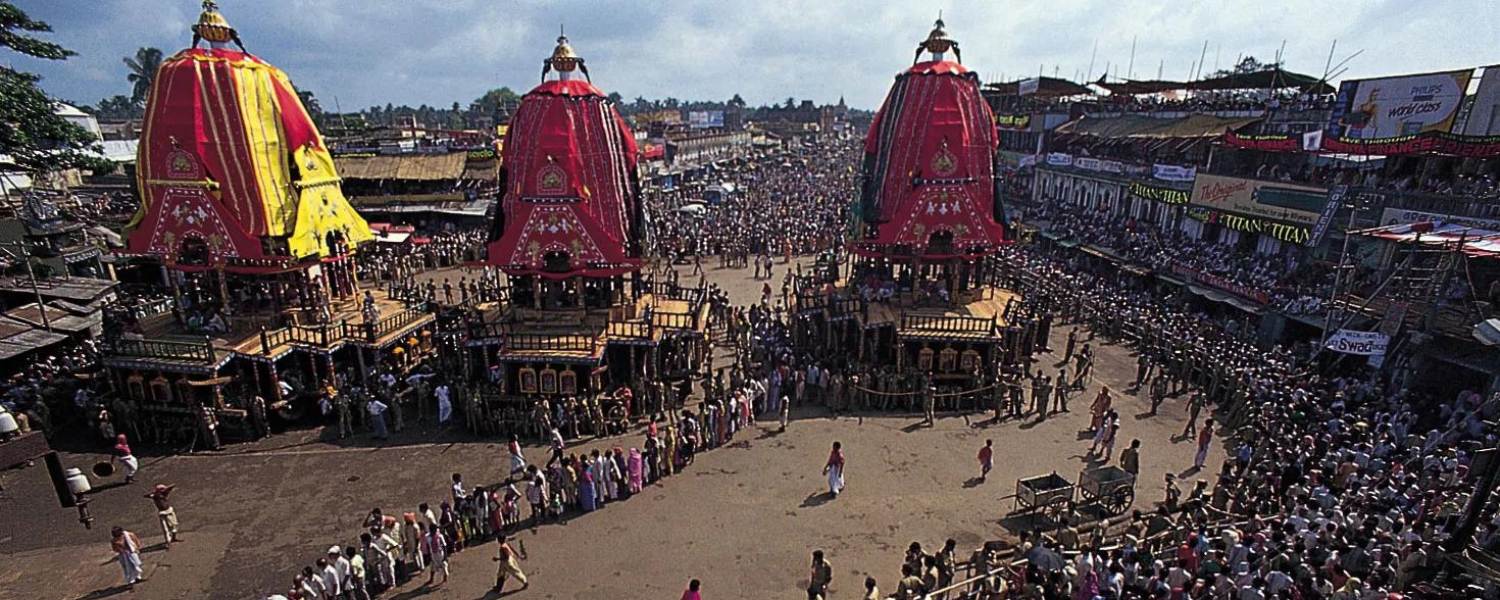
Devotees celebrate Ratha Yatra, a grand spectacle of devotion, with immense zeal in the temple town of Puri, Odisha. This annual event involves the procession of deities Jagannath, Balabhadra, and Subhadra in elaborately decorated chariots, symbolizing their journey from the temple to the Gundicha Temple.
The Ratha Yatra attracts millions of devotees from across the globe, making it a prominent event in the religious festivals of India.
Conclusion
The diversity of religious festivals in India transcends geographical and religious boundaries, creating a harmonious blend that reflects the essence of the country. These festivals are not mere events on a calendar; they are living traditions that embody the spirit of communal harmony, shared joy, and spiritual awakening.
Whether it’s the rhythmic beats of Garba during Navratri, the colourful swirls of powder in Holi, or the meditative chants during Buddha Purnima, each celebration resonates with a common thread. the pursuit of spiritual elevation and a connection with the divine.
As we traverse the landscapes of India through these festivals, we witness the convergence of ancient traditions with modern interpretations. The rituals and customs passed down through generations remain relevant in the contemporary era.
Amid technological advancements and globalization, religious festivals in India serve as anchors, grounding communities in their cultural roots and fostering a sense of identity. The communal aspect of these festivals is particularly striking.
Whether it’s the sharing of sweets during Diwali, the communal feasts of Baisakhi, or the breaking of fasts during Eid-ul-Fitr, the celebrations extend beyond religious affiliations. These festivals become opportunities for social bonding, breaking down barriers, and fostering a sense of brotherhood and sisterhood.
In a country as diverse as India, the shared joy of these celebrations becomes a unifying force, reinforcing the idea that unity is indeed strength.
Celebrating Diversity: The Artistic, Cultural, and Economic Impact of Religious Festivals in India
Festivals vividly express India’s cultural richness through the myriad forms of art and performance that accompany them. The intricate dance forms of Garba during Navratri, the vibrant processions of Rath Yatra, and the mesmerizing classical performances during the Modhera Dance Festival showcase the artistic diversity that flourishes during religious festivals in India.
These festivals serve as stages for cultural expression, where people observe traditions that come alive dynamically and evolve continuously. Moreover, the economic significance of these festivals must be considered. From the bustling markets during Diwali to the surge in tourism during Kumbh Mela, these celebrations stimulate economic activities, supporting local artisans, businesses, and communities.
The economic impact further underscores the holistic nature of religious festivals in India, influencing not only the spiritual and cultural realms but also contributing to the socioeconomic dynamics of the nation. In conclusion, India’s Top 50 Religious Festivals offer a panoramic view of the country’s spiritual landscape.
The tapestry woven by these celebrations is intricate and diverse, reflecting the multifaceted nature of India’s cultural heritage. Through the lens of these festivals, we witness not just religious observances but a collective celebration of life, spirituality, and shared humanity.
The vibrant colours, melodious hymns, and aromatic incense fill the air, captivating one with the profound beauty of religious festivals in India.This beauty transcends time, borders, and beliefs.










